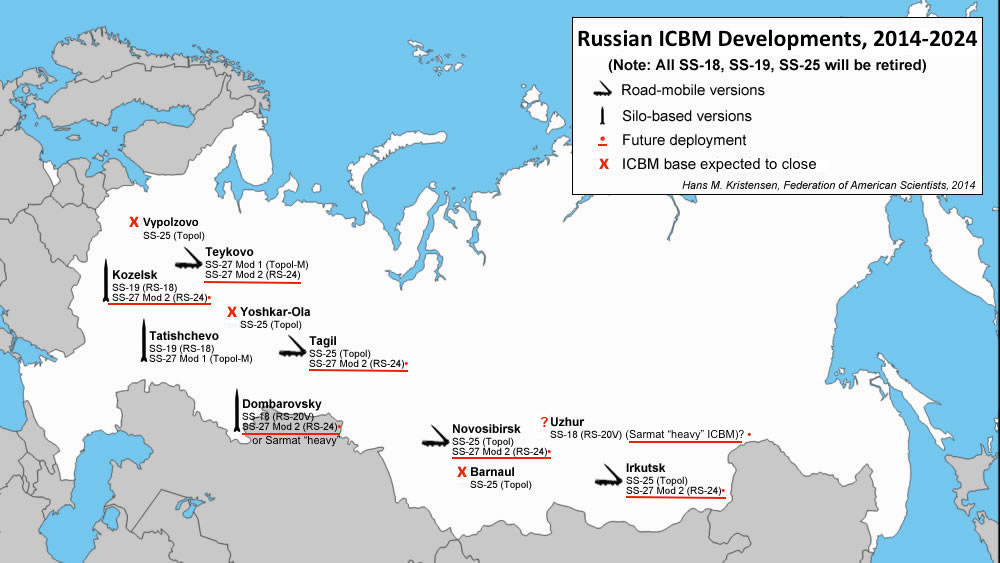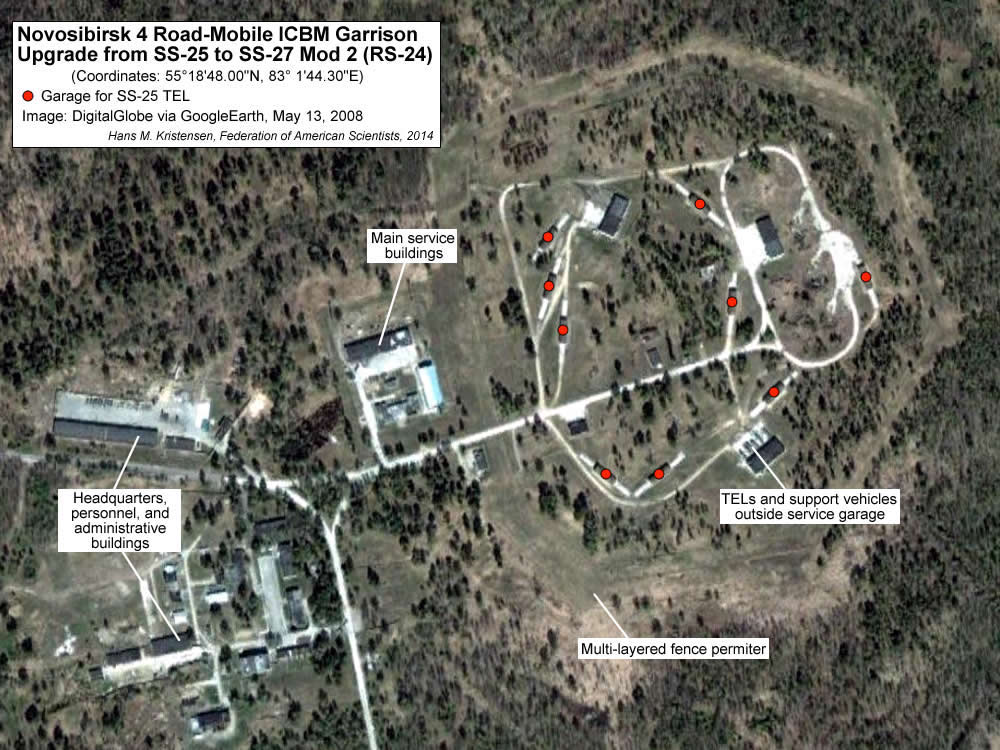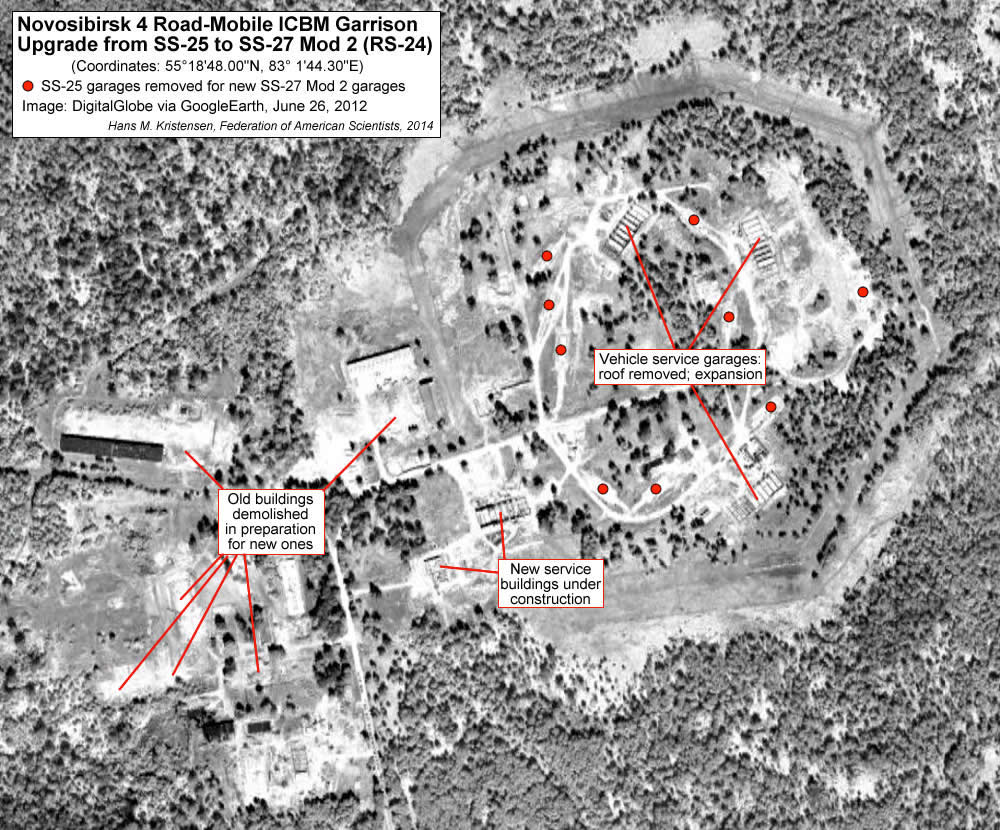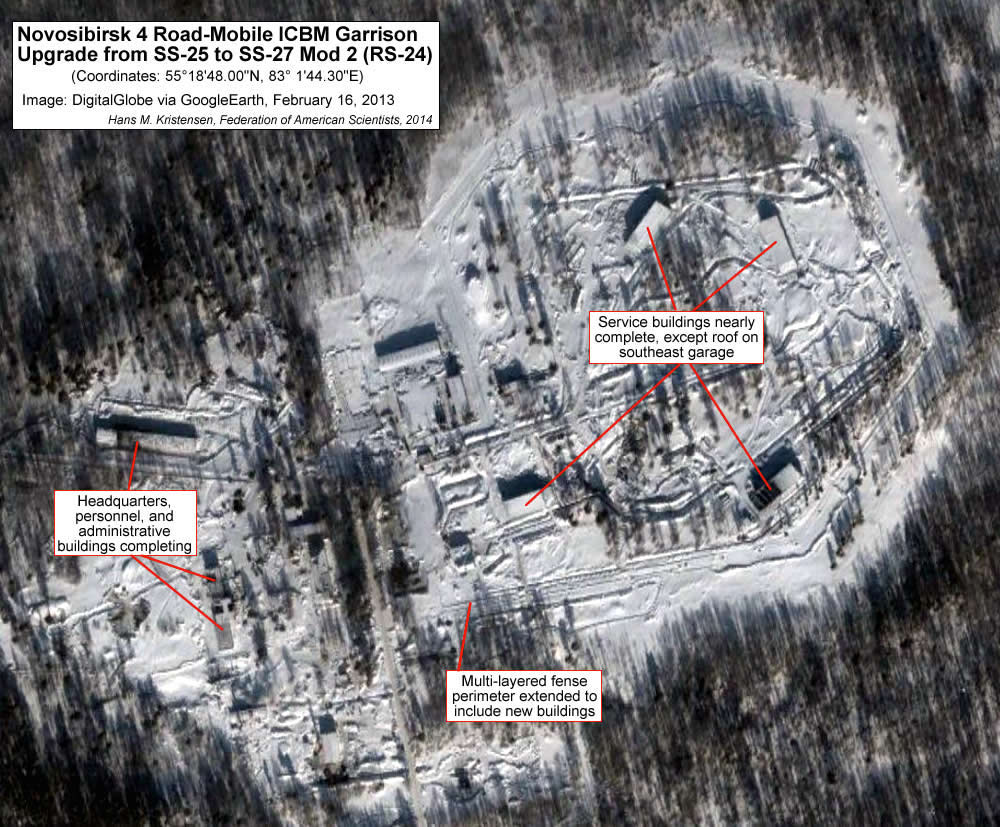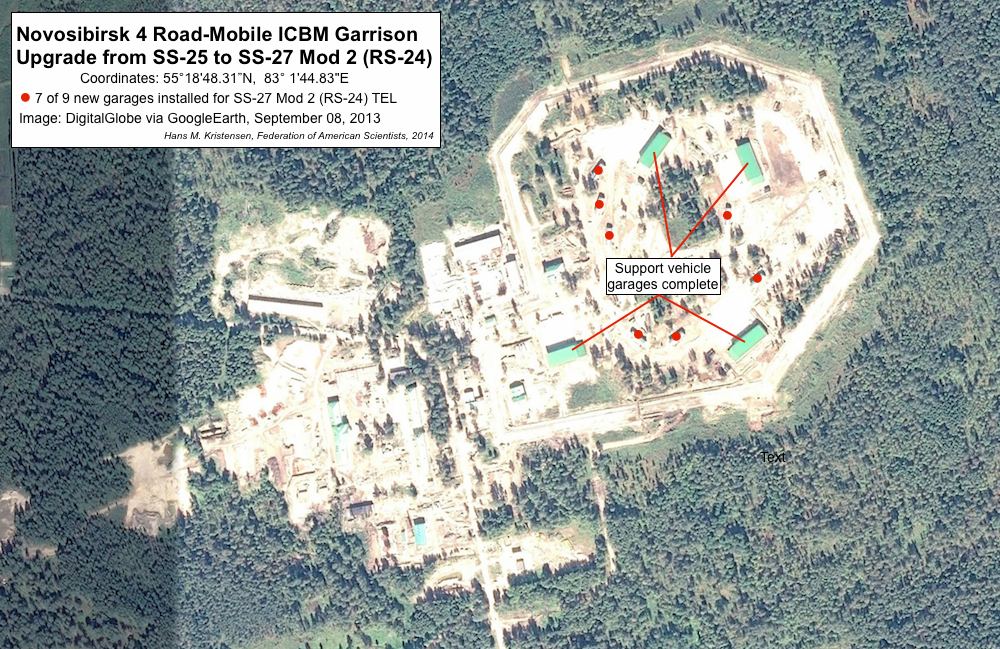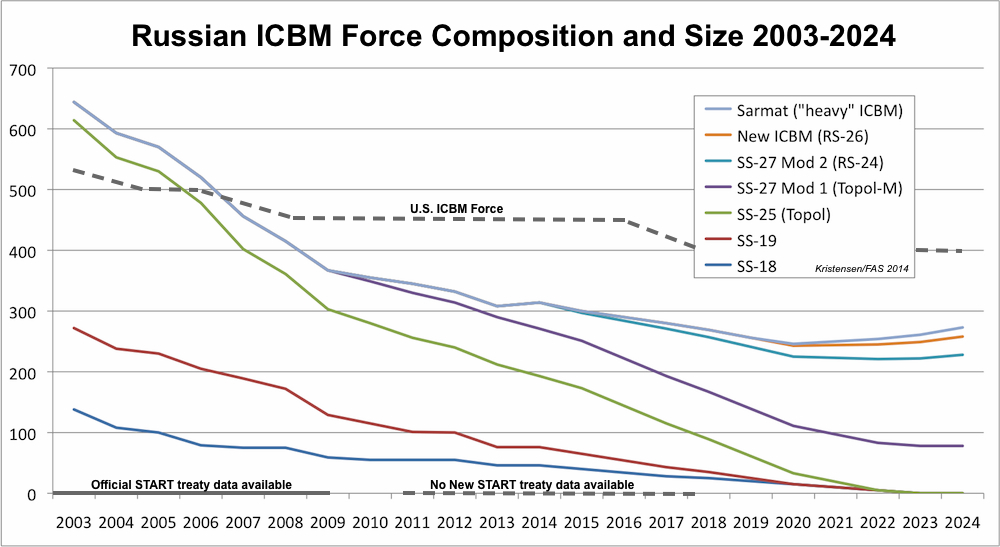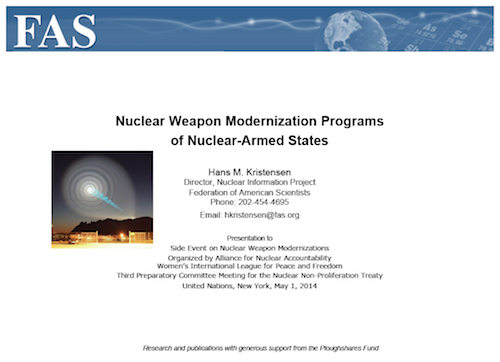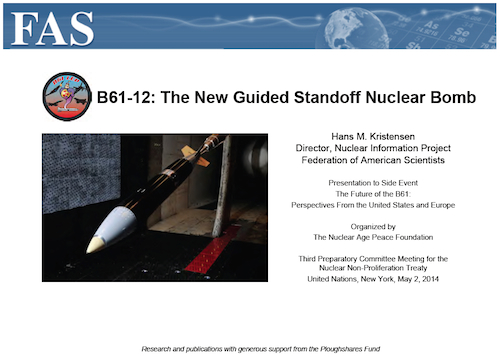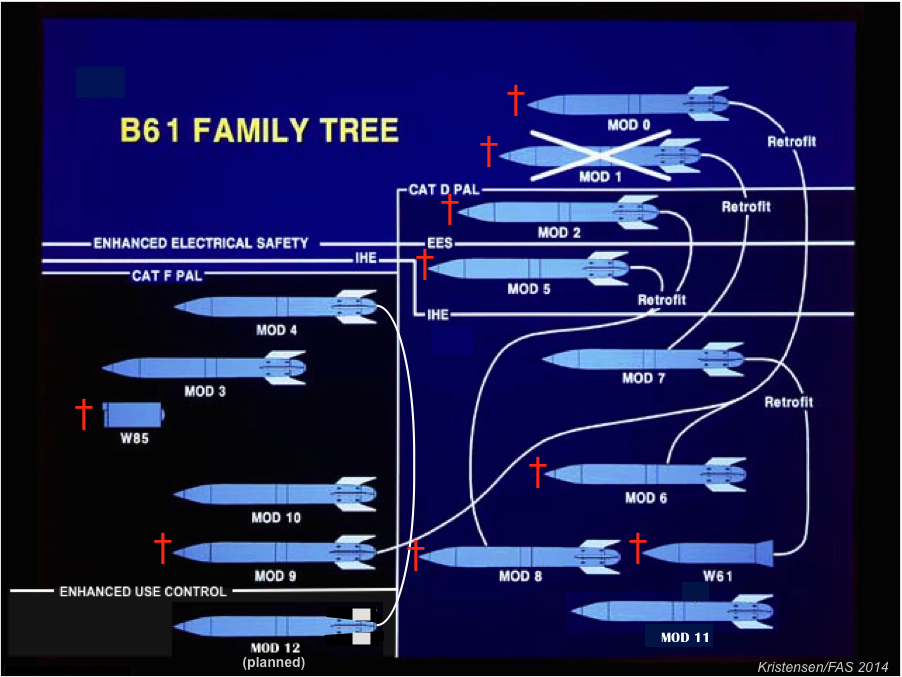The Need for a Comprehensive Approach to Reduce Nuclear Risks
There is broad international consensus about reduction of nuclear risks as one of the most relevant drivers to enhance global security. However, degrees of involvement, priorities and approaches adopted to deal with the issue differ from state to state. They are dependent on interests and self-perceived roles as well as cultures and traditions of nations. As in the past, the recent statements at the Preparatory Committee for the 2015 Non-Proliferation Treaty (NPT) Review Conference are again a good sample of such different postures.
While nuclear-armed states and their allies are primarily focused on demanding more nonproliferation and nuclear security1, the majority of states without nuclear weapons mainly demand the fulfillment of nuclear disarmament commitments. States on each side tend to think that they have done more than enough, but it is clear that there is much more to be done.
In today’s multi-polar world, nuclear threats have undeniably increased, and even more so since nuclear terrorism became a plausible threat. At the same time the fragility of international trust progressively becomes more evident, mainly due to lack of global common goals and frustration over ineffective multilateral action. This fragmented scenario puts traditional strategies for reducing nuclear risks at a crossroads.
Global threats require global solutions
In order to understand the global dimension of nuclear threats, it is worthwhile to analyze potential scenarios from the perspective of their consequences.
The negative consequences of any potential incident would be twofold: those directly affecting the target of the attack in terms of casualties and destruction, and those indirectly stemming from the high degree of global interconnection. Such global impacts would surely include political disruption, environmental damage, disturbance of the global economy, restrictions to international trade (including that of primary resources), and deep psychosocial commotion. Also, they would encompass a deferral in the delivery of humanitarian international aid to developing countries due to a change in funding priorities of the developed countries.In other words, almostevery aspect of human activity around the world would suffer chaos and disruption.
Furthermore, in the case of a large-scale nuclear exchange, there would be severe impacts on the climate and food supplies, which would lead to extreme poverty. It is clear that in terms of nuclear risks, what happens to one happens to all.
The existence of more than 16,000 nuclear weapons deployed in 14 countries and in the oceans of the world (many of them on a high state of alert), implies risks of intentional or unintentional detonation. A recent study by Chatham House revealed 13 known cases involving six nuclear-armed states, from 1962 to 2002, when the arms were on the verge of being detonated by error or accident.2
Besides the risks of potential use, the mere existence of the weapons entails more negative impacts. Nuclear-armed states jointly spend around $11 million dollars per hour to maintain their nuclear weapons complexes, and the rate of spending follows an upward trend. Despite reductions in the number of weapons, such expenditures are sustained by on-going modernization efforts.3
These funds are constantly drained away from investments to close basic social deficits in several of the states, and international aid, which developed nations normally devote to fight extreme poverty. The socio-economic impacts are extremely significant as these expenditures- if used for another purpose, would be enough to reduce world poverty by 60 percent over ten years.
Nuclear weapons are also a factor of global inequality, as they fictitiously divide the world in two different categories of actors: the “haves” and the “have-nots.” In fact, the possession of nuclear arms leads to international power in the hands of very few, and in this way, contaminates multilateral dialogue at the expense of respect and equal treatment of the interests of the non-possessors. In addition, the high relevance of nuclear weapons in national/collective security doctrines acts as a powerful attraction for further proliferation, as they are perceived as icons of international power and prestige.
In terms of potential terrorist and criminal acts, the facilities where these arms are stored are protected in different ways and therefore may be subject to intrusion or theft, among many other threats. There is weapons-usable material distributed in 25 countries which involve similar risks.4
The immediate conclusion is that the detonation of nuclear weapons (be it sophisticated or improvised, carried out by states or non-state actors), would impact every member of the global community in many different dimensions and there would be little distinction as to the perpetrator– or to the reason for use: intention, error or accident.
The strategies to avoid potential devastating incidents (by the elimination of current arsenals, and the prevention of proliferation and of terrorist use), are in essence mutually dependent. In other words, an integrated system to reduce nuclear risks would be the most efficient option as it would harmonize the strategies adopted to promote nuclear disarmament, nuclear security and the prevention of further proliferation.
Integrating disarmament, nonproliferation and nuclear security efforts
The goal of opening paths toward efficient integration of strategies for the reduction of nuclear risks poses big challenges, but is well worth the effort in view of the current crisis of the traditional instruments that rule the global nuclear order. It is key to recognize that separation and imbalances among disarmament, nonproliferation and nuclear security efforts are factors that play against the stability of the present system.
Experience shows that even the most valuable and innovative approaches in nuclear risks reduction tend to miss out on opportunities to promote integrated views and synergic actions. For example, the Second Conference on the Humanitarian Impact of Nuclear Weapons held earlier this year in Nayarit, Mexico (which brought together 146 states and many non-governmental organizations), focused almost exclusively on the humanitarian impact of nuclear exchanges between states. Even though the Conference took place a short time in advance of the Nuclear Security Summit (NSS) in the Netherlands (which focused on preventing nuclear terrorism), only a few voices pointed out in Nayarit the similarities in terms of risks and humanitarian consequences with nuclear terrorist attacks. On the other hand, at the NSS in The Hague, there was little debate about how to link nuclear security, disarmament and nonproliferation efforts as building-blocks of a common strategy.5 6
To do away with these conceptual silos opens up a broad range of opportunities. To take advantage of them requires a change of beliefs and paradigms-from both internal politics and international relations- that have been firmly in place for years. In order to advance in this direction, it is absolutely necessary that states take into consideration not only their own interests – and those of their strategic allies – but also the interests of other different actors and those of the international community as a whole.
Restoring balance and building confidence
Today, limited progress in disarmament can be attributed to the prevailing role of nuclear weapons and nuclear deterrence in the security doctrines of key states and alliances. For example, NATO’s 2012 Defense and Deterrence Posture Review reaffirms the role of nuclear weapons by recognizing them as “a core component of the Alliance’s overall capabilities for deterrence and defense alongside conventional and missile defense forces.” It also recognizes strategic nuclear forces as the supreme guarantee of the security of the Allies.7
However, the performance of nuclear weapons as an effective deterrent is increasingly questioned by the expert community. It is accepted that they are of no use to deter acts of nuclear terrorism, and in practice, history has also made it clear the unlikeliness of use against non-nuclear armed states, even in the worst conflict. The belief in nuclear deterrence as a source of power contrasts with the plausibility of any use, and only finds a place within the framework of the strategic dialogue among nuclear-armed states. It is crucial that possessors re-think deterrence in light of such evidences in order to progressively reorient towards the use of less risky means. They owe this effort to the entire global community.
Nuclear sharing and extended deterrence also poison any intent of a positive evolution toward nuclear disarmament and should be reconsidered. It seems at least questionable to see non-nuclear weaponsstates hosting nuclear weapons in their territories, or others benefitting from nuclear umbrellas and requesting security based on these weapons.It is essential that those states jointly work with their strategic allies to make conscious decisions to favor other kinds of deterrence in order to satisfy their security needs. A virtuous example could be the creation of a strategic dialogue among Japan, South Korea, the United States and China to agree upon a solution involving other means regarding North Korea’s security threats.
The tensions between possessors and non-possessors lead to disagreement about disarmament strategies. The traditional step-by-step approach conflicts with the humanitarian initiative put forward by non-nuclear weapons states, which gained momentum after the 2010 Non Proliferation Treaty (NPT) Review Conference. The NPT’s “P5 nuclear weapons states” (China, France, Russia, United Kingdom and the United States) made their beliefs clear that the humanitarian initiative contradicts the adopted step-by-step approach and is “a distraction” from the current disarmament efforts.8 In this sense, the absence of most of nuclear weapons possessors from both the Conferences on the Humanitarian Impact of Nuclear Weapons, in Olso and Nayarit showed reluctance not only to act, but also to enter into any kind of innovative disarmament dialogue.9
In order to be successful, any progress in this area should be carried out with – and not without – those in possession of the weapons. It implies bigger challenges in terms of integrating not only diverse interests, but also diverse rhetoric and mindsets.
Nuclear-armed states should seriously consider joining the open dialogue about innovative ways to speed up nuclear disarmament, given the damage to their credibility caused by their absence. For example, they should participate in the Third Conference on the Humanitarian Impact of Nuclear Weapons, to be held on December 8-9 in Vienna. The international community needs to do as much as possible to persuade those states to attend and to debate.10
At the same time, the implementation of safeguards is evolving to more enhanced schemes. There has been international pressure to make the more restrictive Additional Protocol (AP) the brand-new standard of verification (in replacement of the current Comprehensive Safeguards Agreements (CSAs) prescribed by the NPT for non-nuclear weapons states). In addition the IAEA is transitioning to a state-level approach aimed at controlling more efficiently the compliance of safeguards agreements. But the trust in the nonproliferation system is seriously damaged and many states show resistance to these proposals. The perceived paralysis in disarmament is politically counterproductive to encourage non-possessors to accept enhanced nonproliferation obligations as well as initiatives which could set limits to their rights to fully develop nuclear energy for peaceful uses. However, states should recognize the relevance of extra nonproliferation guarantees to close the NPT loophole in terms of the control of non-declared nuclear facilities. 11
The high-level political process of the Nuclear Security Summits promoted by the United States since 2010 has brought to the international agenda the protection of civilian nuclear materials and related facilities from nuclear terrorism and criminal use. Nevertheless, there are still major tasks pending that should be positively resolved with the end-of-cycle Summit in the United States in 2016. A key point is to define the Summits process’ legacy. It intends to reach the necessary agreements to set up a stable and efficient global system for nuclear security. The agreements should ensure continuity to the nuclear security effort beyond the Summits. Taking into account that the totality of nuclear weapons and the 85 percent of weapons-usable materials (HEU and separated plutonium) that are stored in non-civilian facilities, it is essential to include them as an integral part of any realistic global system to prevent nuclear terrorism and illicit trafficking.
Another challenge is to promote the adoption by states of binding, minimum nuclear security standards, which would give assurances to the international community regarding the responsible protection of each state’s materials and facilities.
As recognized by the 2014 NSS Communiqué, there is still much to do to achieve universal adherence to the key binding instruments on the matter, including the Convention on the Physical Protection of Nuclear Material (CPPNM), its 2005 Amendment (which will enter into force once ratified by 22 more states to reach the two-thirds of signatory states of the original convention) and the International Convention for the Suppression of Acts of Nuclear Terrorism (ICSANT).12 13
It is necessary for the future of the initiative that the United States overcomes the current domestic stalemate in Congress and move ahead by ratifying both the 2005 CPPNM Amendment and the ICSANT. In fact, such ratifications are essential not only to enhance the whole nuclear security effort, but also to recover the eroded international confidence and good will concerning U.S. proposals and initiatives on the matter. In both cases, as with the ratification of the Comprehensive Test Ban Treaty (CTBT), the United States should lead by example.14
The Strengthening Nuclear Security Implementation initiative led by the United States, South Korea and the Netherlands is a document in which the signatories recognize that nuclear security is an international, not just a national responsibility. The 35 subscriber states commit themselves to embed the objectives of the nuclear security fundamentals and IAEA recommendations in national rules and regulations, and to host peer reviews to ensure effective implementation. In addition, the signatories pledge to act to further ensure continuous improvement of the nuclear security regime. 15 16
The NSS process shows that positive initiatives would reach broader acceptance within a framework of enhanced understanding, credibility and confidence among states with different backgrounds. A way to achieve such virtuous framework is by restoring a relative balance of commitments concerning disarmament, nonproliferation and nuclear security, for which every state should have a clear role.
A pragmatic approach
The ideas shared here involve pure pragmatism. The unrealistic belief that nuclear weapons can grant global security at the cost of deep international imbalances should progressively give way to innovative thinking on how to break the “status quo” to achieve deeper understanding of threats and design cooperative ways to prevent any further catastrophic incident. The need to define integrated strategies to efficiently reduce nuclear risks is now both indispensable and urgent.
Concerning state-level actors (even in the multi-polar environment), the preeminent roles of the United States and Russia is without question, as they together possess 95 percent of nuclear weapons and the majority of weapons-usable material. Any realistic approach to nuclear security should be based on the close cooperation of both states. For example, it is important that the Ukraine crisis be carefully managed to preserve their nuclear understanding of further deterioration. Leaders on both sides should deeply reflect with responsibility on the negative global consequences of breaking such substantial common ground.
Today the majority of states are paying a very high price in terms of insecurity to satisfy the false perception of security of a small few. It is crucial to bring back the balance between rights and responsibilities of states of different positions and define common goals for the international community, in terms of nuclear risks reduction. Determined actions and gestures of disarmament by nuclear-armed states could become powerful drivers to restore the necessary global confidence.
From a global perspective of threats and consequences, the common goal would be to ensure in realistic terms that no security vulnerability in any state could directly or indirectly contribute to any catastrophic nuclear incident, regardless of where it would happen.
Pragmatism should guide leaders toward innovative approaches to reduce nuclear risks based on comprehensive views and coordinated efforts. Multiplication of conflicts and a resulting and almost uncontrollable global insecurity are enough evidences that such joint efforts should be now maximized.
Irma Arguello is the Founder and Chair of the NPSGlobal Foundation, Secretary of the Latin American and Caribbean Leadership Network for Nuclear Disarmament and Nonproliferation – LALN, member of the Steering Committee of the Fissile Materials Working Group – FMWG, and Associate Fellow of Chatham House.
Russia Declared In Violation Of INF Treaty: New Cruise Missile May Be Deploying
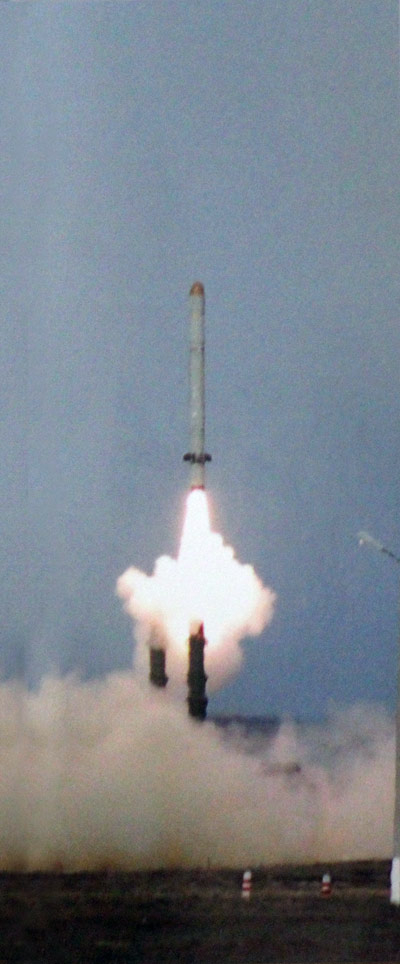
A Russian GLCM is launched from an Iskander-K launcher at Kapustin Yar in 2007.
The United States yesterday publicly accused Russia of violating the landmark 1987 Intermediate-Range Nuclear Forces (INF) Treaty.
The accusation was made in the State Department’s 2014 Compliance Report, which states:
“The United States has determined that the Russian Federation is in violation of its obligations under the INF Treaty not to possess, produce, or flight-test a ground-launched cruise missile (GLCM) with a range capability of 500 km to 5,500 km, or to possess or produce launchers of such missiles.”
The Russian violation of the INF is, if true, a very serious matter and Russia must immediately restore its compliance with the Treaty in a transparent and verifiable manner.
Rumors about a violation have swirled around Washington (and elsewhere) for a long time. Apparently, the GLCM was first launched in 2007 (see image to the left), so why the long wait?
The official accusation it is likely to stir up calls for the United States to abandon the INF Treaty and other arms control efforts. Doing so would be a serious mistake that would undercut benefits from existing and possible future agreements. Instead the United States should continue to adhere to the treaty, work with the international community to restore Russian compliance, and pursue additional measures to reduce nuclear dangers worldwide.
What Violation?
The unclassified Compliance Report doesn’t specify the Russian weapon system that it concludes constitutes a violation of the INF Treaty. Nor does it specify when the violation occurred. The classified version and the briefings that the Obama administration has given Congress and European allies presumably are more detailed. All the Compliance Report says is that the violation concerns a GLCM with a range of 310 miles to 3,400 miles (500 km to 5,500 km).
While public official identification is still pending, news media reports and other information indicate that the violation possibly concerns the Iskander-K weapon system, a modification of the Iskander launcher designed to carry two cruise missiles instead of two SS-26 Iskander-M ballistic missiles.
[UPDATE December 2014: US Undersecretary of State Rose Gottemoeller helpfully removes some of the uncertainty: “It is a ground-launched cruise missile. It is neither of the systems that you raised. It’s not the Iskander. It’s not the other one, X-100 [sic; X-101].” And the missile “is in development.”
The cruise missile apparently was first test-launched at Kapustin Yar in May 2007. Russian news media reports at the time identified the missile as the R-500 cruise missile. Sergei Ivanov was present at the test and Vladimir Putin confirmed that “a new cruise missile test” had been carried out.
Public range estimates vary tremendously. One report claimed last month that the range of the R-500 is 1,243 miles (2,000 km), while most other reports give range estimates from 310 miles (500 km) and up. Images on militaryrussia.ru that purport to show the R-500 GLCM 2007-test show dimensions very similar to the SS-N-21 SLCM (see comparison below).
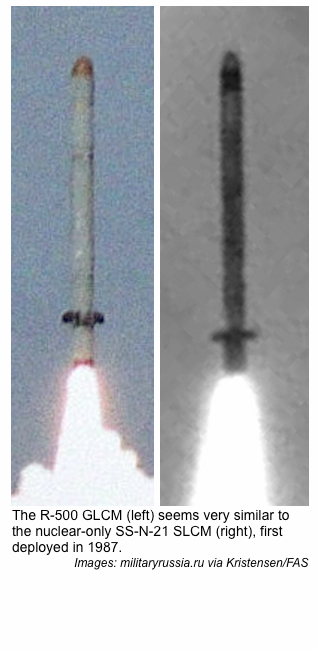
Images on militaryrussia.ru that purport to show the R-500 GLCM 2007-test show dimensions very similar to the SS-N-21 SLCM
The wildly different range estimates might help explain why it took the U.S. Intelligence Community six years to determine a treaty violation. A State Department spokesperson said yesterday that the Obama administration “first raised this issue with Russia last year. ”The previous Compliance Report from 2013 (data cut-off date December 2012) did not call a treaty violation, and the 2013 NASIC report did not mention any GLCM at all.
So either there must have been serious disagreements and a prolonged debate inside the Intelligence Community about the capability of the GLCM. Or the initial flight tests did not exceed 310 miles (500 km) and it wasn’t until a later flight test with an extended range – perhaps in 2012 or 2013 – exceeded the INF limit that a violation was established. Obviously, much uncertainty remains.
Deployment Underway at Luga?
The Compliance Report, which covers through December 2013, does not state whether the GLCM has been deployed and one senior government official consulted recently did not want to say. And the New York Times in January 2014 quoted an unnamed U.S. government official saying the missile had not been deployed.
But since then, important developments have happened. Last month, Russian defense minister Sergei Shuigu visited the 26 Missile Brigade base near Luga south of Saint Petersburg, approximately 75 miles (120 km) from the Russian-Estonian border. A report of the visit was posted on the Russian Ministry of Defense’s web site on June 20th.
The report describes introduction of the Iskander-M ballistic missile weapon system at Luga, a development that has been known for some time. But it also contains a number of photos, one of which appears to show transfer of an Iskander-K cruise missile canister between two vehicles.
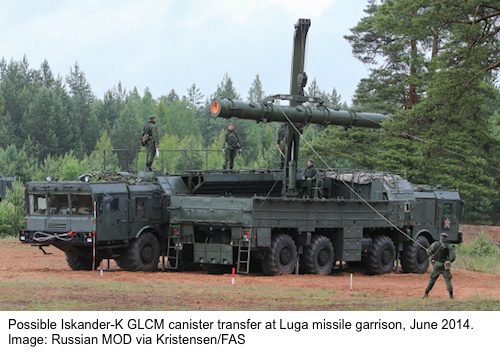
The fact that the Russian MOD report shows both what appears to be the Iskander-M and the Iskander-K systems is interesting because images from another visit by defense minister Shuigo to the 114th Missile Brigade in Astrakhanskaya Oblast in June 2013 also showed both Iskander-M and Iskander-K. During that visit, Shoigu said that Iskander was delivered in a complete set, rather than “piecemeal” as done before. That could indicate that the Iskander units are being equipped with both the Iskander–M ballistic missile and Islander-K cruise missile, and that Luga is the first western missile brigade to receive them.
A satellite image from April 9, 2014, shows significant construction underway at the Luga garrison that appears to include missile storage buildings and launcher tents for the Iskander weapon system (see image below). The base is upgrading from the Soviet-era SS-21 (Tochka) short-range ballistic missile.

Construction underway at the 26th Missile Brigade base near Luga show what appear to include missile storage buildings and launcher tents for the Iskander weapon system.
The eight garage-tents that are visible on the satellite photo also appear on the ground photos the Russian MOD published of defense minister Shuigo’s visit to Luga. The garages are in two groups bent in a slight angle that is also visible one of the ground photos (see middle photo of collage below).
Earlier this month, the acting commander of the western military district told Interfax that infrastructure to house the missiles is being built at the base where they will be stationed. And Russian news media reported that the first of the three Missile Battalions at Luga had completed training and the Iskander was accepted for service on July 8, 2014. The remaining two Battalions will complete training in September, at which time the 26th Missile Brigade is scheduled to conduct a launch exercise in the western military district.
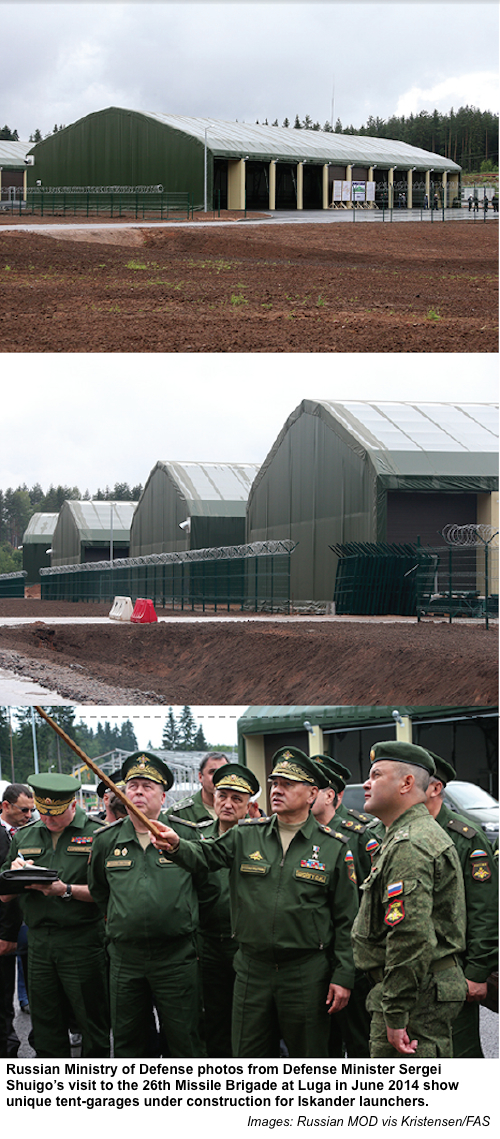
What the Report Doesn’t Say
Troubling as the alleged INF violation is, the Compliance Report also brings some good news by way of what it doesn’t say.
For example, the Compliance Report does not say that any Russia ballistic missiles violate the INF. Some speculated last year that Russia’s development of a new long-range ballistic missile – the RS-26, a modified version of the RS-24 (SS-27 Mod 2) intercontinental ballistic missile (ICBM) – was a violation because it was test-flown at less than 5,500 km. I challenged that at the time and the 2013 NASIC report clearly listed the “new ICBM” with a range of more than 5,500 km. The Compliance Report indirectly confirms that Russian longer-range ballistic missiles have not been found to be in violation of the INF.
Nor does the Compliance Report declare any shorter-range ballistic missiles – such as the SS-26 Iskander-M – to be in violation of the treaty. This is important because there have been rumors that the Iskander-M might have a range of 310 miles (500 km) or more.
As such, the Compliance Repot helpfully confirms indirectly that the Iskander-M range must be less than 310 miles (500 km). This conclusion matches the 2013 NASIC report, which lists the Iskander-M (SS-26) range as 186 miles (300 km).
The report also indirectly lay to rest rumors that the violation might have involved a sea-launched cruise missile that was test-launched on land.
Conclusions and Recommendations
The alleged Russian violation of the INF treaty is serious stuff that calls into question Russia’s status as a trustworthy country. That status has already taken quite a few hits recently with the annexation of Crimea and the proxy-war in eastern Ukraine. But it’s one thing for a country to withdraw from a treaty because it’s deemed no longer to serve national security interests; it’s quite another to cheat while pretending to abide by it.
That’s why the U.S. accusation is so serious that Russia has violated the terms of the 1987 INF Treaty by producing, flight-testing, and possessing a GLCM with a range of more than 310 miles (500 km). Unfortunately, the lack of details in the unclassified report will leave the public guessing about what the violation is and enable Russian officials to reject the accusation (at least in public) as unsubstantiated.
Shortly after the 2007 flight-test of the GLCM now seen as violating the INF, President Putin warned that it would be difficult for Russia to adhere to the INF Treaty if other countries developed INF weapons. He didn’t mention the countries but Russian defense experts said he meant China, India, and Pakistan.
By that logic, one would have expected Russia’s first deployment of Iskander-K and its GLCM to be in eastern or central Russia. Instead, the first deployment appears to be happening at Luga in the western military district, even though the United States no longer has GLCMs deployed in Europe.
There is a real risk that Russia will now formally withdraw from the INF Treaty. Doing so would be a serious mistake. First, it is because of the INF Treaty that Russia no longer faces quick-strike INF missiles in Europe. Moreover, continuing the INF treaty is Russia’s best hope of achieving some form of limitations on other countries’ INF weapons. But instead of trying to sell INF limitations to China and India, Putin has been busy selling them advanced weapons, including cruise missiles.
In the meantime, Russia must restore its compliance with the INF Treaty in a transparent a verifiable manner. Doing anything else will seriously undermine Russia’s international status and isolate it at next year’s nuclear Non-Proliferation Treaty (NPT) Review Conference.
Some will use Russia’s alleged INF violation to argue that the United States should withdraw from the INF treaty and abandon other arms control initiatives because Russia cannot be trusted. But the treaty has served its purpose well and it is in the U.S. and European interest to maintain and promote its norms to the extent possible. Besides, the United States and NATO have plenty of capability to offset any military challenge a potential widespread Russian GLCM deployment might pose.
Moreover, arms control treaties, such as the New START Treaty or future agreements, can have significant national security benefits by allowing the United Stated and its allies better confidence in monitoring the status and development of Russian strategic nuclear forces. For arms control opponents to use the INF violation to prevent further reductions of nuclear weapons that can otherwise hit American and allied cities seems downright irresponsible.
This publication was made possible by a grant from the Ploughshares Fund and New Land Foundation. The statements made and views expressed are solely the responsibility of the author.
Resolving the Crisis in Ukraine: International Crisis Group’s Recommendations
As readers of the FAS Strategic Security Blog know, we have been concerned about the potential of the crisis in Ukraine to escalate, further worsening U.S.-Russian relations and possibly resulting in armed conflict involving NATO and Russia. As the May 25th presidential election in Ukraine is fast approaching, this post draws attention to advice and recommendations from the International Crisis Group, a highly respected non-governmental organization. Here’s the announcement of the major findings from the group’s newest report Ukraine: Running out of Time.
[As an organization comprising thousands of members with differing views, FAS headquarters reminds readers that this and other posts do not represent the position of FAS as an organization. Instead, these posts provide a platform for reasoned discourse and exchange of ideas. Constructive comments are welcomed.]
“Ukraine needs a government of national unity that reaches out to its own people and tackles the country’s long overdue reforms; both Russia and Western powers should back a vision for the country as a bridge between East and West, not a geopolitical battleground.”
The report “offers recommendations to rebuild and reform the country and reverse the geopolitical standoff it has provoked. The Kyiv government has been unable to assert itself or communicate coherently and appears to have lost control of parts of the country to separatists, emboldened if not backed by Russia. To prevent further escalation, Ukraine needs strong international assistance and the commitment of all sides to a solution through dialogue, not force.
The report’s major findings and recommendations are:
- Although conditions for the election are far from ideal, it must take place as planned and nationwide. The vote is needed to produce a new leader with a popular mandate to steer the country through a process of national reconciliation and economic reform. All presidential candidates should, before the polls, commit to establish a broad-based government of national unity; the new president’s first priority must be to form such a government.
- Ukrainian leaders should reach out immediately to the south and east and explain plans for local self-government and minority rights; they should also declare that they do not desire NATO membership.
- Ukraine’s damage goes far beyond separatism. It is the fruit of decades of mismanagement and corruption across security organs and most other arms of government. Far-reaching reform of the security sector and measures to strengthen the rule of law are crucial.
- Russia should declare unqualified support for Ukraine’s territorial integrity and withdraw all troops from the borders, as well as any paramilitaries who have infiltrated from Crimea or elsewhere. It should persuade Russian speakers in the south and east to end their occupations of government buildings and attacks on local security apparatuses and disband their militias.
- The U.S. and EU need to convey a consistent and measured message, recognizing – even if not accepting – Moscow’s take on the crisis’s origins. This message should comprise political support for Kyiv to conduct elections; political, financial and expert support for a national unity government to carry out stabilization measures; measures to make Ukraine viable for investors; further sanctions to bite deeper into Russia’s economy if it does not change course; and quiet high-level talks with Moscow aimed at resolving the crisis.
- Both Moscow and Western powers should emphasize that the present situation can only be resolved by diplomatic means; express support for a post-election government of national unity; take all possible measures to avoid geopolitical confrontation; and insulate other mutual concerns from divisions over Ukraine.
‘On the ground in Ukraine today, Russia has immediate advantages of escalation,’ says Paul Quinn-Judge, Europe and Central Asia Program Director. ‘Over time, the West likely has the economic and soft-power edge. A successful, democratic Ukraine – integrated economically in the West but outside military alliances, and remaining a close cultural, linguistic and trading partner of Russia – would benefit all.’”
Preventing Ukraine From Spiraling Out of Control
The crisis in Ukraine continues to simmer, but thankfully has not yet boiled over. Here are some of the developments since I last wrote on this topic, followed by some thoughts on what is needed to minimize the risk of the conflict spiraling out of control.
Former Ukrainian President Leonid Kuchma assessed the situation as follows:
Russia does not recognize the legitimacy of the current government in Kyiv and will not negotiate with it. Ukraine has no chance there. Ukraine could have taken concrete steps in this direction in the beginning but we didn’t do that. For instance, a delegation of lawmakers could have gone to Moscow [to bring Russia into the process.] …
To analyze Russia’s actions, you have to try to understand Putin’s point of view. Russia has always feared having NATO right under Moscow’s nose. … Putin never trusted Ukraine, especially its government. He always assumed that one day someone would come to power in Ukraine that would ignore the Russian-Ukrainian friendship, and Ukraine would join the European Union and NATO. …
I don’t see any candidate [for the Ukrainian presidency] who enjoys enough popularity to unite Ukraine. …The future leadership should include representatives of all regions in order to unite the country. If it consists of only half of Ukraine, there will consequences in the other half of the country.
Prof. Keith Darden of American University wrote in Foreign Affairs:
A pro-European, pro-NATO government ruling a regionally divided country – and one that is quite vulnerable to Russian military intervention – is a recipe for instability, not for European integration. Simply pushing forward with EU association and NATO integration without pushing the government in Kiev to address its illegitimacy problems through means other than arrest is not much of a strategy. It’s not even much of a gamble, as it is almost certain to fail. One way or another, power in Ukraine needs to be spread out. …
The most obvious way to do that is through some form of constitutional change. Call it what you want: decentralization, federalization, regionalization. … Kiev needs to transfer some very substantial powers, including those over education, language, law, and taxation, to the regions. … The Russian plan to federalize Ukraine, which, in reality, is a plan to turn Ukraine into a weak confederation where the central government is largely ceremonial, is a step too far. … [But] As long as Ukraine retains its highly centralized winner-take-all political system, and one regional faction sits in Kiev with the backing of either Russia or the West, Ukraine is going to be unstable. With a little bit of constitutional accommodation, though, the divided house just might stand.
The interim Ukrainian government (or junta in Moscow’s view) has repeatedly attempted to use military force to evict pro-Russian demonstrators (or terrorists in Kiev’s view) from government buildings in the eastern part of Ukraine. These efforts have had limited success, with some Ukrainian units surrendering or defecting to the pro-Russian side. This may lead (or already have led) Kiev to consider using some of Ukraine’s more virulently anti-Russian elements (e.g., the Pravy (Right) Sektor and the Svoboda Party) since they can be counted on not to avoid bloodshed.
Russia sees the West as exercising a blatant double standard in that it warned Yanukovych not to use military force against the Maidan demonstrators who eventually brought down his government, yet approves the use of similar force against pro-Russian demonstrators. Of course, Russia itself is not immune to holding double standards, but that makes things doubly dangerous. If both sides in a conflict mistakenly believe they are in the right, they then expect the other (“wrong”) side to back down. When both sides have thousands of nuclear weapons, the risk is clearly heightened.
Conditions almost boiled over last Friday (May 2) when pro- and anti-Russian gangs clashed in a bloody riot in Odessa and dozens of pro-Russian demonstrators were burned alive in a fire. According to the New York TImes:
What followed were hours of bloody street clashes involving bats, pistols and firebombs. … The pro-Russians, outnumbered by the Ukrainians, fell back … [and] sought refuge in the trade union building.
Yanus Milteynus, a 42-year-old construction worker and pro-Russian activist, said he watched from the roof as the pro-Ukrainian crowd threw firebombs into the building’s lower windows, while those inside feared being beaten to death by the crowd if they tried to flee. …
The conflict is hardening hearts on both sides. As the building burned, Ukrainian activists sang the Ukrainian national anthem, witnesses on both sides said. They also hurled a new taunt: “Colorado” for the Colorado potato beetle, striped red and black like the pro-Russian ribbons. Those outside chanted “burn Colorado, burn,” witnesses said. Swastikalike symbols were spray painted on the building, along with graffiti reading “Galician SS,” though it was unclear when it had appeared, or who had painted it.
It should be noted that anti-Russian reports allege that the fire was started by the pro-Russian group when they threw Molotov cocktails down from the upper floors. It is impossible at this point in time to say which version is true, and that cautionary note applies to almost all reports.
Harvard’s Prof. Graham Allison summarized the nuclear risk well in a recent article in The National Interest:
The thought that what we are now witnessing in Ukraine could trigger a cascade of actions and reactions that end in war will strike most readers as fanciful. Fortunately, it is. But we should not forget that in May 1914, the possibility that the assassination of an Archduke could produce a world war seemed almost inconceivable. History teaches that unlikely, even unimaginable events do happen.
Given that less than six years elapsed between the Georgian War and this current crisis, each with the potential to lead to armed conflict between US and Russian forces or nuclear threats, even a small probability for each event to escalate can result in an unacceptable cumulative risk.
Adding to the risk, British Foreign Minister William Hague just told Georgia that its bid to join NATO enjoys his “very clear support.” Such promises appear to have played a role both in emboldening Georgia to fire the first shots in its 2008 war with Russia and in Russia’s outsized reaction. While the promise was made to Georgia, it seems clearly linked to the situation in Ukraine.
To reduce the risk of the Ukrainian crisis spiraling out of control, both the West and Russia should stop viewing the conflict as a football game in which there is a winner and a loser. Instead, we need to start being more concerned with creating a situation in which all the people of Ukraine can live reasonable lives, without fear of subjugation or physical harm.
Russian ICBM Force Modernization: Arms Control Please!
By Hans M. Kristensen
In our Nuclear Notebook on Russian nuclear forces from March this year, Robert S. Norris and I described the significant upgrade that’s underway in Russia’s force of land-based intercontinental ballistic missiles (ICBMs).
Over the next decade, all Soviet-era ICBMs will be retired and replaced with a smaller force consisting of mainly five variants of one missile: the SS-27.
After more than a decade-and-a-half of introduction, the number of SS-27s now makes up a third of the ICBM force. By 2016, SS-27s will make up more than half of the force, and by 2024 all the Soviet-era ICBMs will be gone.
The new force will be smaller and carry fewer nuclear warheads than the old, but a greater portion of the remaining warheads will be on missiles carried on mobile launchers.
The big unknowns are just how many SS-27s Russia plans to produce and deploy, and how many new (RS-26 and Sarmat “heavy”) ICBMs will be introduced. Without the new systems or increased production of the old, Russia’s ICBM force would probably level out just below 250 missiles by 2024. In comparison, the U.S. Air Force plans to retain 400 ICBMs.
This disparity and the existence of a large U.S. reserve of extra warheads that can be “uploaded” onto deployed missiles to increase the arsenal if necessary drive top-heavy ICBM planning in the Russian military which seeks to maximize the number of warheads on each missile to compensate for the disparity and keep some degree of overall parity with the United States.
This dilemma suggests the importance of reaching a new agreement to reduce the number deployed strategic warheads and missiles. A reduction of “up to one-third” of the current force, as recently endorsed by the new U.S. nuclear employment strategy, would be a win for both Russia and the United States. It would allow both countries to trim excess nuclear capacity and save billions of dollars in the process.
Phased Deployment
Introduction of the SS-27 has come in two phases. The first phase, which last from 1997 to 2013, involved deployed the single-warhead type (SS-27 Mod 1; Topol-M) in silos and on road-mobile launchers. The silo-based version was deployed first, replacing SS-19s in the 60th Missile Division at the Tatishchevo missile field outside Saratov. The deployment was completed in 2013 (see picture below) after 60 SS-27 Mod 1 missiles had been lowered into former SS-19 silos at a slow pace of less than 4 missile in average per year.
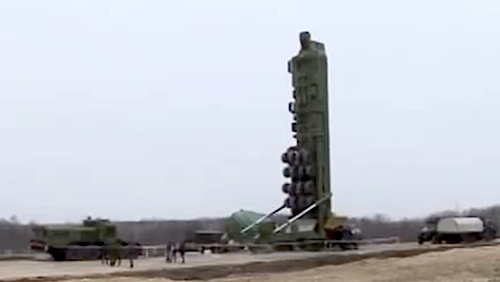
An SS-27 Mod 1 (Topol-M) is lowered into a former SS-19 silo at the Tatishchevo missile field outside Saratov.
In 2006, deployment of the first road-mobile SS-27 Mod 1 began with the 54th Guards Missile Division at Teykovo northeast of Moscow. The deployment was completed in 2010 with 18 missiles in two regiments.
With completion of the SS-27 Mod 1 deployment of 78 missiles, efforts have since shifted to deployment of a MIRVed version of the SS-27, known as SS-27 Mod 2, or RS-24 Yars in Russia. It is essentially the same missile as the Mod 1 version except the payload “bus” has been modified to carry multiple independently targetable warheads (MIRV). Each missile is thought to be able to carry up to 4 warheads, although there is uncertainty about what the maximum capacity is (but it is not 10 warheads, as often claimed in Russian news media).
The first road-mobile SS-27 Mod 2s were deployed at Teykovo in 2010, alongside the SS-27 Mod 1s already deployed there. For the foreseeable future, all new Russian ICBM deployments will be of MIRVed versions of the SS-27, although a “new ICBM” and a “heavy ICBM” are also being developed.
In 2012, preparations began for introduction of SS-27 Mod 2 at three additional missile divisions. At the 28th Missile Guards Division at Kozelsk southwest of Moscow, conversion of former SS-19 silos (see picture below) to carry the SS-27 Mod 2 is underway with deployed of the first regiment (10 missiles) scheduled this year. How many missiles will be deployed at Kozelsk is unclear. The missile field originally included 60 SS-19 silos but half have been demolished so perhaps the plan is for three regiments with 30 SS-27 Mod 2 missiles. After silo-based RS-24s are installed at Kozelsk, deployment will follow at the 13th Missile Division at Dombarovsky, replacing the SS-18s currently deployed there.
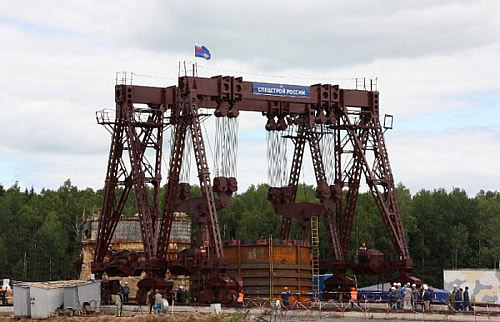
A former SS-19 ICBM silo at Kozelsk is being upgraded to receive the SS-27 Mod 2 (RS-24 Yars) ICBM. Deployment begins this year.
In addition to Kozelsk, preparations are also underway to upgrade three road-mobile SS-25 garrisons to the SS-27 Mod 2. At this point, this includes the 51st Missile Guards Division at Irkutsk, the 39th Guards Missile Division at Novosibirsk, and the 42nd Missile Division at Nizhniy Tagil.
Preparation started at Novosibirsk in 2012, where two of four garrisons are under conversion. One of these (Novosibirsk 4; see further description below) is nearly complete. Conversion started at Irkutsk in 2012 with dismantling of SS-25 garages at one of the three remaining garrisons. At Tagil, SS-27 Mod 2 introduction is underway at two of three remaining SS-25 garrisons. In December 2013, the first SS-27 Mod 2 regiment at Novosibirsk (9 launchers) and one partially equipped (6 launchers) regiment at Tagil were put on “experimental combat duty.”
The remaining SS-25 divisions – the 7th Guards Missile Division at Vypolsovo, the 14th Missile Division at Yoshkar-Ola, and the 35th Missile Division at Barnaul – have not been mentioned for SS-27 Mod 2 upgrade and seem destined for retirement. One of the three garrisons at Yoshkar-Ola has been inactivated.
Below follows a more detailed description of the upgrade to SS-27 Mod 2 (RS-24) underway at Novosibirsk.
SS-27 Upgrade at Novosibirsk
As mentioned above, the 39th Guards Missile Division at Novosibirsk is being upgraded from the solid-fuel road-mobile single-warhead SS-25 ICBM to the solid-fuel road-mobile MIRVed SS-27 Mod 2 (RS-24). A series of unique satellite images provided by Digital Globe to Google Earth show the upgrade of one of four garrisons (Novosibirsk 4) between 2008 and 2013.
The first image from May 2008 (see below) shows the garrison with all nine garages for SS-25 road-mobile launchers (TELs) clearly visible inside the multi-layered fence perimeter. Several TELs and support vehicles are parked outside one of three service buildings.
The second image from June 2012 (see below) shows that all nine TEL garages have been dismantled and the roof is missing on the three service vehicle buildings. Two new service buildings are under construction just outside the fence perimeter and several buildings have been demolished in preparation for new administrative and technical buildings.
The third image, taken in February 2013, shows the fence perimeter at the southwest corner of the garrison has been extended westward to include the new service buildings. This extension is similar to the change that was made at Teykovo when two garrisons were equipped with the SS-27 Mod 2 (RS-24). The image indicates that support vehicle garages inside the fence perimeter are almost done, and that administrative and technical buildings outside the perimeter have been added.
The fourth image (see below), from September 2013, shows installation of new TEL garages for the SS-27 Mod 2 (RS-24) launchers well underway, with seven of eventually nine garages visible. The green roofs of the four large service vehicle garages are clearly visible, as are the new administrative and technical building outside the fence perimeter.
The Future ICBM Force
Predicting the size and composition of the Russian ICBM force structure into the future comes with a fair amount of uncertainty because Russia doesn’t release official data on its nuclear forces, because U.S. intelligence agencies no longer publish detailed information on Russian nuclear forces, and because Russian aggregate data under the New START treaty is not made public (unlike during the previous START treaty). Nonetheless, based on previous history, scattered officials statements, and news media reports, it is possible to make a rough projection of how the Russian ICBM might evolve over the next decade (see graph below).
This shows that the size of the Russian ICBM force dropped below the size of the U.S. ICBM force in 2007 mainly due to the rapid reduction of the SS-25 ICBM. By the early 2020s, according to recent announcements by Russian military officials, all SS-18, SS-19, and SS-25 ICBMs will be gone. Development of a new ICBM – apparently yet another version of the SS-27 – known in Russia as the RS-26 is underway for possible introduction in 2015. And a new liquid-fuel “heavy” ICBM known in Russia as the Sarmat, and nicknamed “Son of Satan” because it apparently is intended as a replacement for the SS-18 (which was code-named Satan by the United States and NATO) is said to be scheduled for introduction around 2020.
This development would leave a Russian ICBM force structure based on five modifications of the solid-fuel SS-27 (silo- and mobile-based SS-27 Mod 1; silo- and mobile-based SS-27 Mod 2 (RS-24); and the RS-26) and the liquid-fuel Sarmat with a large payload – either MIRV or some advanced payload to evade missile defense systems. Although the future force will be smaller, a greater portion of it will be MIRVed – up from approximately 36 percent today to roughly 70 percent by 2024. This increasingly top-heavy ICBM force is bad for U.S-Russian strategic stability.
I hope I’m mistaken about the possible increase in the Russian ICBM force after 2020. In fact, it seems more likely that the Russian economy will not be able to support the production and deployment of “over 400 modern land and sea-based inter-continental ballistic missiles” that President Putin promised in 2012. But if I’m not mistaken, then it would be an immensely important development. Not that I think it would matter that much militarily in the foreseeable future or necessarily signal a new arms race. But it would be a significant break with the trend we have seen in Russian nuclear forces since the end of the Cold War, and it would create serious problems for the stability of the Non-Proliferation Treaty regime. It is important that the Russian government provides more transparency about its nuclear force structure plans and demonstrate that it is not planning to increase its ICBM force shortly after the New START treaty expires in 2018.
Regardless, there is an increasing need for Russia and the United States to make more progress on nuclear arms control. Notwithstanding its important verification regime, the New START treaty was too modest to impress anyone (it has no real effect on Russian nuclear forces and it is so modest that the United States plans to keep emptied ICBM silos instead of destroying them). A good start would be a new arms control agreement with “up to one-third” fewer deployed strategic warheads and launchers than permitted by the New START Treaty, as recently endorsed by the U.S. Nuclear Employment Strategy. Such an agreement would force Russia to reduce the warhead loading on its ICBMs and force the United States to reduce its large ICBM force.
It is also important that the United States and Russia revisit the MIRV-ban. The START II treaty, which was signed but not ratified and later abandoned by Vladimir Putin and George W. Bush in 2002, included a ban on MIRVed ICBMs. Apart from reducing the warheads the two nuclear superpowers would be able to launch agains each other, a MIRV ban would also serve the vital role of discouraging other nuclear-armed states from deploying multiple warheads on their ballistic missiles in the future, which could otherwise significantly increase their nuclear arsenals and result in regional arms races.
Trying to pursue new reductions in excessive and expensive nuclear forces and avoid counterproductive modernization programs is perhaps even more important now given the souring relations caused by the crisis in Ukraine. Don’t forget: even at the height of the Cold War it was possible – in fact essential – to reach nuclear arms control agreements.
Additional background: Russian Nuclear Forces, 2014 | Russian SSBN Fleet
This publication was made possible by a grant from the Ploughshares Fund. The statements made and views expressed are solely the responsibility of the author.
Nuclear Modernization Briefings at the NPT Conference in New York

By Hans M. Kristensen
Last week I was in New York to brief two panels at the Third Session of the Preparatory Committee for the 2015 Review Conference of the Parties to the Treaty on the Non-Proliferation of Nuclear Weapons (phew).
The first panel was on “Current Status of Rebuilding and Modernizing the United States Warheads and Nuclear Weapons Complex,” an NGO side event organized on May 1st by the Alliance for Nuclear Accountability and the Women’s International League for Peace and Freedom (WILPF). While describing the U.S. programs, I got permission from the organizers to cover the modernization programs of all the nuclear-armed states. Quite a mouthful but it puts the U.S. efforts better in context and shows that nuclear weapon modernization is global challenge for the NPT.
The second panel was on “The Future of the B61: Perspectives From the United States and Europe.” This GNO side event was organized by the Nuclear Age Peace Foundation on May 2nd. In my briefing I focused on providing factual information about the status and details of the B61 life-extension program, which more than a simple life-extension will produce the first guided, standoff nuclear bomb in the U.S. inventory, and significantly enhance NATO’s nuclear posture in Europe.
The two NGO side events were two of dozens organized by NGOs, in addition to the more official side events organized by governments and international organizations.
The 2014 PREPCOM is also the event where the United States last week disclosed that the U.S. nuclear weapons stockpile has only shrunk by 309 warheads since 2009, far less than what many people had anticipated given Barack Obama’s speeches about “dramatic” and “bold” reductions and promises to “put an end to Cold War thinking.”
Yet in disclosing the size and history of its nuclear weapons stockpile and how many nuclear warheads have been dismantled each year, the United States has done something that no other nuclear-armed state has ever done, but all of them should do. Without such transparency, modernizations create mistrust, rumors, exaggerations, and worst-case planning that fuel larger-than-necessary defense spending and undermine everyone’s security.
For the 185 non-nuclear weapon states that have signed on to the NPT and renounced nuclear weapons in return of the promise made by the five nuclear-weapons states party to the treaty (China, France, Russia, United Kingdom, and the United States) “to pursue negotiations in good faith on effective measures relating to the cessation of the nuclear arms race at early date and to nuclear disarmament,” endless modernization of the nuclear forces by those same five nuclear weapons-states obviously calls into question their intension to fulfill the promise they made 45 years ago. Some of the nuclear modernizations underway are officially described as intended to operate into the 2080s – further into the future than the NPT and the nuclear era have lasted so far.
Download two briefings listed above: briefing 1 | briefing 2
This publication was made possible by a grant from the Ploughshares Fund. The statements made and views expressed are solely the responsibility of the author.
US Nuclear Weapons Stockpile Number Declassified: Only 309 Warheads Cut By Obama Administration
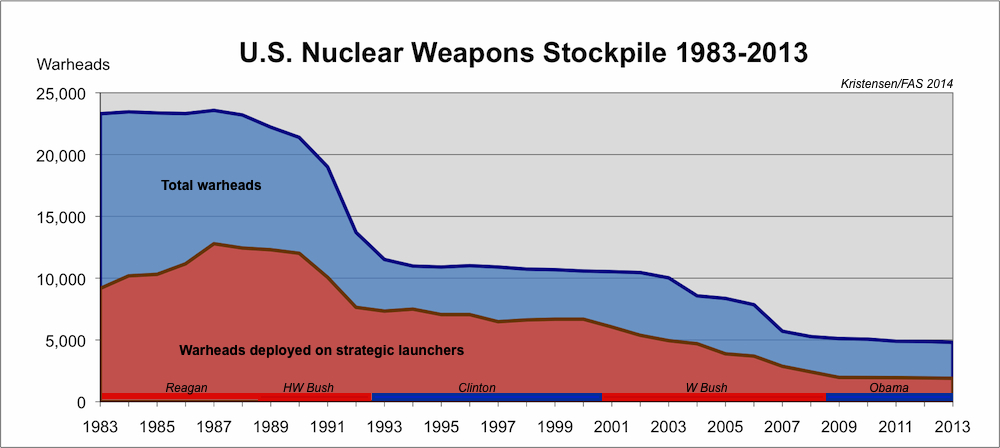
The Obama administration has yet to make a visible dent in the U.S. nuclear weapons stockpile. Click on graph for larger format.
By Hans M. Kristensen
After a transparency hiatus of four years, the Obama administration has declassified the size of its nuclear weapons stockpile: 4,804 warheads as of September 2013.
The new stockpile size is 309 warheads fewer than the 5,113 warheads that the administration in 2010 reported were in the stockpile as of September 2009.
The new number of 4,804 warheads is 154 warheads more than Norris and I have in our latest Nuclear Notebook, in which we estimated a stockpile of 4,650 warheads. That estimate was, in part, based on the statement by Donald Cook, the NNSA administrator for defense programs, who in an email in February 2013 informed us that the reduction had been “approximately 85%” since 1967.
The new State Department announcement also mentions the “85 percent reduction,” although the 4,804 warheads actually correspond to a reduction of approximately 84 percent from the peak of 31,255 warheads in 1967. We thought 154 additional warheads had been retired, but apparently that will take a little longer.
What the declassification does not include, unfortunately, is a number for how many retired warheads are awaiting dismantlement. That number includes “several thousand” warheads, according to the fact sheet; we estimate approximately 2,500.
Timing is Everything
The declassification is timed with the opening in New York of the third preparatory committee meeting for the Nuclear Non-Proliferation Treaty. As a declared nuclear-weapon state party to the treaty, the United States needs to be able to demonstrate that it is living up to its obligations under the treaty’s Article VI to “pursue negotiations in good faith on effective measures relating to cessation of the nuclear arms race at an early date….”
Since President Barack Obama took office in 2009, the record shows the United States has:
* Reduced the nuclear stockpile by 309 warheads (roughly equivalent to the size of the entire French nuclear stockpile);
* Dismantled 1,204 retired warheads (more than the nuclear weapons inventories of France, China, Britain, Pakistan, India, Israel, and North Korea combined);
* Negotiated and signed the New START Treaty, limiting U.S. and Russian deployed strategic warheads to 1,550 by 2018, down from the 2,200 limit of the 2002 Moscow Treaty.
For the other nuclear-weapon states that have signed the NPT (Britain, China, France, and Russia) Britain and France have disclosed some stockpile numbers, although they were single year numbers and not the stockpile history like that of the United States. Both should disclose more complete histories of their nuclear stockpiles and dismantlements.
China and Russia have not disclosed anything but need to become more transparent about their stockpiles.
Implications
It is good to see that the administration has decided to declassify the stockpile and dismantlement numbers after 2009. It provides and official record that the United States is making progress (although slowly) in reducing its inventory of nuclear warheads.
Yet only 309 warheads fewer in four years! Not exactly the “dramatic” reductions promised by Barack Obama during the 2008 election campaign.
In fact, the numbers demonstrate one, for the Obama administration, uncomfortable fact: it has yet to make a noticeable dent in the stockpile. Big stockpile reductions over the past 30 years have all happened during Republican presidents (see table above). Although the Clinton administration dismantled over 11,000 retired nuclear warheads, it did not make significant reductions in the remaining stockpile or the number of warheads deployed on launchers. After the W Bush administration cut the stockpile nearly in half and offloaded more than half of the warheads deployed on strategic launchers, the Obama administration’s policies so far have had only a modest effect on the size of the stockpile and the number of warheads deployed on strategic launchers.
One reason is that the Obama administration has been opposed by a Republican Congress that has fought against nuclear reductions. But it is also because the administration itself has reaffirmed long-standing nuclear policy, protected the force structure, and emphasized modernizations of nuclear forces.
One would hope that the administration during its final four years would be bolder and seek to implement more reductions without Congressional approval of a new treaty. Clearly, much more can be done. Russia is already well below the New START limits and its nuclear forces are expected to decline further even without a follow-on treaty. Both Russia and the United States need to cut defense spending and both still have nuclear arsenals that are vastly in excess of national security needs.
The B61 Family of Nuclear Bombs
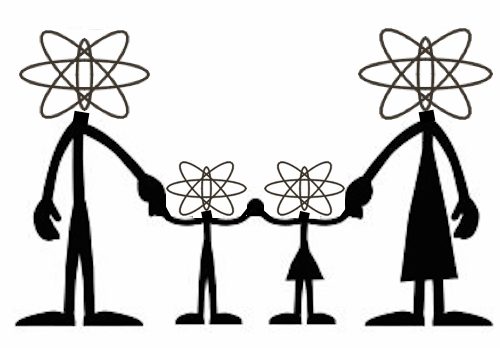
By Hans M. Kristensen
Robert Norris and I have made an update to our Nuclear Notebook on the B61 nuclear bomb family. Kind of an arcane title but that cozy-feeling title is what the nuclear weapon designers call that half a dozen different types of B61 nuclear weapons that were derived from the original design.
And it’s kind of timely, because the Obama administration is about to give birth to the newest member of the B61 family: the B61-12. And this is a real golden baby estimated at about $10 billion.
A Shrinking Family
The B61 family has lost a lot of members over the years. Nine of the fifteen total variations have been retired or canceled. The remaining five versions currently in the stockpile were built in 1979-1998.
Although based on the same basic warhead design first developed in the 1960s, the capabilities of the remaining version vary considerably with explosive yields ranging from 0.1 kilotons to a whopping 400 kilotons – more than 30 times as powerful as the bomb that destroyed Hiroshima in 1945.
Now the Obama administration has proposed that four of the remaining versions (B61-4, B61-7, B61-10, and B61-11) can be retired if the last version – the B61-4 – is converted into a guided standoff nuclear bomb. An even larger bomb, the B83-1, can also be retired, they say (even though its retirement was planned anyway).
The sales pitch is as arcane as the family name: building a new bomb is good for disarmament.
But most of the B61 bombs and the B83 could probably be retired anyway for the simple reason that deterrence no longer requires six different ways of dropping a nuclear bomb from an aircraft. A much simpler and cheaper life-extended version of the B61-7 could probably do the job.
Implications
The new B61-12 will be capable of holding at risk the same targets as current gravity bombs in the US stockpile (apparently even those currently covered by the B61-11 nuclear earth-penetrator that the Air Force no longer needs), but it will able to do so more effectively and with less yield (thus less collateral damage and radioactive fallout) that the existing bombs.
Congress rejected Air Force requests for new, low-yield, precision-guided nuclear weapons in the 1990s because of concern that such weapons would be seen as more usable than larger strategic warheads. With the B61-12, which will have several low-yield options, the military appears to obtain a guided low-yield nuclear strike capability after all.
In Europe, the effect of the B61-12 will be even more profound because its increased accuracy essentially will add high-yield targeting capability to NATO’s non-strategic arsenal. When mated with the stealthy F-35A fighter-bomber planned for Europe in the mid-2020s, the B61-12 will represent a considerable enhancement of NATO’s nuclear posture in Europe.
How they’re going to spin that development at the nuclear Non-Proliferation Treaty Review Conference in New York next year will be interesting so see. But the B61-12 program is part of a global technological nuclear arms race with nuclear weapon modernization programs underway in all the nuclear-armed states that is in stark contrast to the wishes of the overwhelming number of countries on this planet to see the “cessation of the nuclear arms race at early date and to nuclear disarmament,” as enshrined in the nuclear Non-Proliferation Treaty (more about that in the May issue of Arms Control Today).
Download the B61 Family article here.
For previous articles about the B61-12, click here.
This publication was made possible by a grant from the Ploughshares Fund. The statements made and views expressed are solely the responsibility of the author.
Obama Administration Decision Weakens New START Implementation
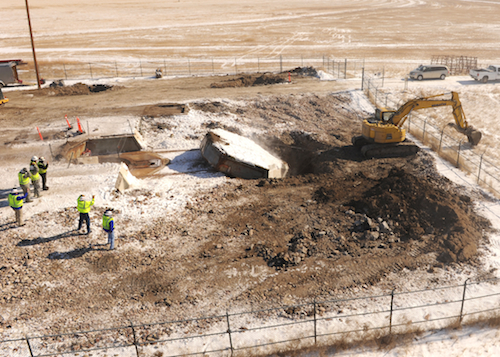
At the same time the Air Force is destroying 50 silos at Malmstrom AFB (above) and another 50 at F.E Warren AFB emptied by the Bush administration, the Obama administration has decided to retain 50 silos scheduled to be emptied under the New START treaty.
By Hans M. Kristensen
After four years of internal deliberations, the U.S. Air Force has decided to empty 50 Minuteman III ICBMs from 50 of the nation’s 450 ICBM silos. Instead of destroying the empty silos, however, they will be kept “warm” to allow reloading the missiles in the future if necessary.
The decision to retain the silos rather than destroy them is in sharp contrast to the destruction of 100 empty silos currently underway at Malmstrom AFB and F.E. Warren AFB. Those silos were emptied of Minuteman and MX ICBMs in 2005-2008 by the Bush administration and are scheduled to be destroyed by 2016.
A New Development
The Obama administration’s decision to retain the silos 50 silos “reduced” under the New START treaty instead of destroying them is a disappointing new development that threatens to weaken New START treaty implementation and the administration’s arms reduction profile. And it appears to be a new development.
A chart in a DOD’s unclassified report to Congress shows that the plan to retain the 50 non-operational ICBM launchers is different than the treaty implementation efforts so far, which have been designed to “eliminate” non-operational launchers.

The plan to retain non-deployed ICBM launchers is different than other aspects of the U.S. New START implementation plan
Indeed, a senior defense official told the Associated Press that the Pentagon had never before structured its ICBM force with a substantial number of missiles in standby status.
Reducing Force Structure Flexibility
The decision to retain the 50 empty silos is also puzzling because it reduces U.S. flexibility to maintain the remaining nuclear forces under the New START limit. The treaty stipulates that the United States and Russia each can only have 700 deployed launchers and 100 non-deployed launchers. But the 50 empty silos will count against the total limit, essentially eating up half of the 100 non-deployed launcher limit and reducing the number of spaces available for missiles and bombers in overhaul.
If, for example, two SSBNs (with 40 missiles), two ICBMs, and eight bombers were undergoing maintenance at the same time, no additional launchers could be removed from deployed status for maintenance unless the deployed force was reduced below 700 launchers. This is not inconceivable. In September 2013, for example, 76 SLBM launchers and 21 B-2A/B-52H bombers (a total of 97 launchers) were counted as non-deployed.
Why the administration would accept such constraints on the flexibility of the U.S. nuclear force posture simply to satisfy the demands of the so-called ICBM caucus in Congress is baffling.
The Reductions
With the DOD New START force structure decision, the future force is now set. The DOD report includes the table below (note: a column with the 2014 deployed launchers has been added to improve comparison), which is also reproduced in a fact sheet (with some corrections and additional information about bombers):
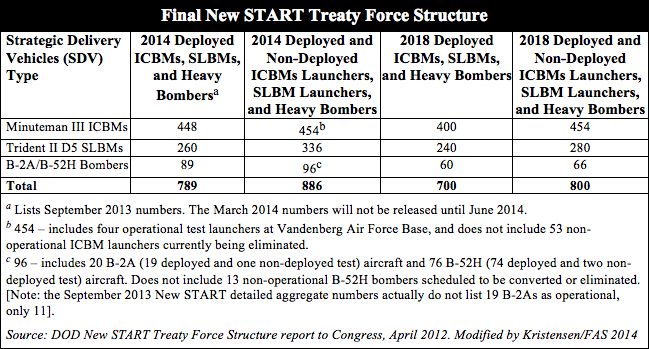
Other than the decision to retain, rather than dismantle, the excess 50 ICBM silos, there are no real surprises. The reductions in actual nuclear forces are very modest. Moreover, the June 2013 Nuclear Weapons Employment Strategy of the United States, which is intended to look beyond 2018, ordered no additional force structure reductions below the New START limits, yet determined that the United States could meet its national and international obligations with up to one-third fewer deployed weapons (1,100 warheads on 470 launchers).
Strategic Implications
What would be the scenario in which the United States would have to redeploy missiles in the extra 50 “warm” silos that the administration has decided to retain? Notwithstanding the crisis in Ukraine, it is hard to envision one.
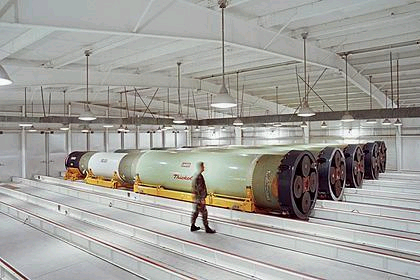
The 50 Minuteman III missiles from the silos will be stored at Hill Air Force Base for potential reloading into the “warm” silos or eventually to be used as flight test assets. What scenario would necessitate redeploying the missiles?
Image credit: @Paul Shambroom/Institute
Unlike the United States, Russia is already well below the New START limit and currently has about 140 ICBMs in silos and another 170 on mobile launchers for a total force of a little over 300 missiles. Despite Russian deployment of new missiles, this ICBM force is likely to drop well below 300 by the early 2020s.
Moreover, the Pentagon determined in 2012 that Russia “would not be able to achieve a militarily significant advantage by any plausible expansion of its strategic nuclear forces, even in a cheating or breakout scenario under the New START Treaty” (emphasis added).
To compensate for the ICBM launcher imbalance and maintain some degree of overall parity with the U.S. arsenal, Russia is deploying more warheads on each of its ICBMs.
This top-heavy posture is bad for strategic stability. It is in the U.S. national security interest to reduce this disparity to increase strategic stability between the world’s two largest nuclear powers. The decision to retain excess ICBM silos instead of destroying them contributes to a Russian misperception that the United States is intent on retaining a strategic advantage and a breakout capability from the New START treaty to quickly increase its deployed nuclear forces if necessary.
The administration can and should change its decision and destroy the ICBM silos that are emptied under New START.
This publication was made possible by a grant from the Ploughshares Fund. The statements made and views expressed are solely the responsibility of the author.
A Conversation with Nobel Laureate Dr. Jack Steinberger
On January 27, 2014, I had the privilege and pleasure of meeting with Dr. Jack Steinberger at CERN, the European Organization for Nuclear Research, in Geneva, Switzerland. In a wide-ranging conversation, we discussed nuclear disarmament, nonproliferation, particle physics, great scientific achievements, and solar thermal power plants. Here, I give a summary of the discussion with Dr. Steinberger, a Nobel physics laureate, who serves on the FAS Board of Sponsors and has been an FAS member for decades.
Dr. Steinberger shared the Nobel Prize in 1988 with Leon Lederman and Melvin Schwartz “for the neutrino beam method and the demonstration of the doublet structure of the leptons through the discovery of the muon neutrino.” Dr. Steinberger has worked at CERN since 1968. CERN is celebrating its 60th anniversary this year and is an outstanding exemplar of multinational cooperation in science. Thousands of researchers from around the world have made use of CERN’s particle accelerators and detectors. Notably, in 2012, two teams of scientists at CERN found evidence for the Higgs boson, which helps explain the origin of mass for many subatomic particles. While Dr. Steinberger was not part of these teams, he helped pioneer the use of many innovative particle detection methods such as the bubble chamber in the 1950s. Soon after he arrived at CERN, he led efforts to use methods that recorded much larger samples of events of particle interactions; this was a necessary step along the way to allow discovery of elusive particles such as the Higgs boson.
In addition to his significant path-breaking contributions to physics, he has worked on issues of nuclear disarmament which are discussed in the book A Nuclear-Weapon-Free World: Desirable? Feasible?, (was edited by him, Bhalchandra Udgaonkar, and Joseph Rotblat). The book had recently reached its 20th anniversary when I talked to Dr. Steinberger. I had bought a copy soon after it was published in 1993, when I was a graduate student in physics and was considering a possible career in nuclear arms control. That book contains chapters by many of the major thinkers on nuclear issues including Richard Garwin, Carl Kaysen, Robert McNamara, Marvin Miller, Jack Ruina, Theodore Taylor, and several others. Some of these thinkers were or are affiliated with FAS.
While I do not intend to review the book here, let me highlight two ideas out of several insightful ones. First, the chapter by Joseph Rotblat, the long-serving head of the Pugwash Conferences, on “Societal Verification,” outlined a program for citizen reporting about attempted violations of a nuclear disarmament treaty. He believed that it was “the right and duty” for citizens to play this role. Asserting that technological verification alone is not sufficient to provide confidence that nuclear arms production is not happening, he urged that the active involvement of citizens become a central pillar of any future disarmament treaty. (Please see the article on Citizen Sensor in this issue of the PIR that explores a method of how to apply societal verification.)
The second concept that is worth highlighting is minimal deterrence. Nuclear deterrence, whether minimal or otherwise, has held back the cause of nuclear disarmament, as argued in a chapter by Dr. Steinberger, Essam Galal, and Mikhail Milstein. They point out, “Proponents of the policy of nuclear deterrence habitually proclaim its inherent stability… But the recent political changes in the Soviet Union [the authors were writing in 1993] have brought the problem of long-term stability in the control of nuclear arsenals sharply into focus. … This development demonstrates a fundamental flaw in present nuclear thinking: the premise that the world will forever be controllable by a small, static, group of powers. The world has not been, is not, and will not be static.”
Having laid bare this instability, they explain that proponents of a nuclear-weapon-free world also foresee that minimal deterrence will “encourage proliferation” because nations without nuclear weapons would argue that if minimal deterrence appears to strengthen security for the nuclear-armed nations, then why shouldn’t the non-nuclear weapon states have these weapons. After examining various levels for minimum nuclear deterrence, the authors conclude that any level poses a catastrophic risk because it would not “eliminate the nuclear threat.”
While Dr. Steinberger demurred that he has not actively researched nuclear arms control issues for almost 20 years, he is following the current nuclear political debates. He expressed concern that President Barack Obama “has said that he would lead toward nuclear disarmament but he hasn’t.” Dr. Steinberger emphasized that clinging to nuclear deterrence is “a roadblock” to disarmament and that “New START is too slow.”
On Iran, he said that if he were an Iranian nuclear scientist, he would want Iran to develop nuclear bombs given the threats that Iran faces. He underscored that if the United States stopped threatening Iran and pushed for global nuclear disarmament, real progress can be made in halting Iran’s drive for the latent capability to make nuclear weapons. He also believes that European governments need to decide to “get rid of U.S. nuclear weapons based in Europe.”
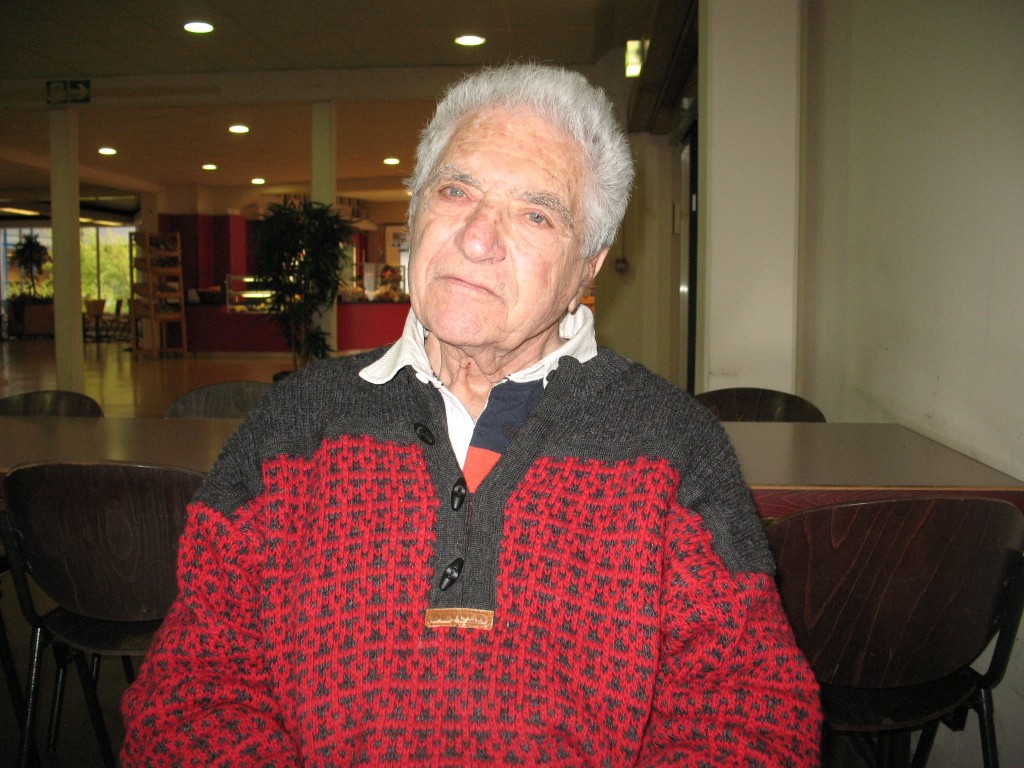
Another major interest of his is renewable energy that can provide reliable, around the clock electrical power. In particular, he has repeatedly spoken out in favor of solar thermal power. A few solar thermal plants have recently begun to show that they can generate electricity reliability even during the night or when clouds block the sun. Thus, they would provide “baseload” electricity. For example, the Gemasolar Thermosolar Plant in Fuentes de Andalucia, Spain, has an electrical power of 19.9 MW and uses a “battery” to generate power. The battery is a molten salt energy storage system that consists of a mixture of 60 percent potassium nitrate and 40 percent sodium nitrate. This mixture can retain 99 percent of the thermal energy for up to 24 hours. More than 2,000 specially designed mirrors, or “heliostats,” arrayed 360 degrees around a central tower, reflect sunlight onto the top part of the tower where the molten salt is heated up. The heated salt is then directed to a heat exchanger that turns liquid water into steam, which then spins a turbine coupled to an electrical generator.
Dr. Steinberger urges much faster accelerated development and deployment of these types of solar thermal plants because he is concerned that within the next 60 years the world will run out of relatively easy access to fossil fuels. He is not opposed to nuclear energy, but believes that the world will need greater use of true renewable energy sources.
Turning to the future of the Federation of American Scientists, Dr. Steinberger supports FAS because he values “getting scientists working together,” but he realizes that this is “hard to do” because it is difficult “to make progress in understanding issues” that involve complex politics. Many scientists can be turned off by messy politics and prefer to stick within their comfort zones of scientific research. Nonetheless, Dr. Steinberger urges FAS to get scientists to perform the research and analysis necessary to advance progress toward nuclear disarmament and to solve other challenging problems such as providing reliable renewable energy to the world.
Prospects for a Middle East Regional Safeguards Organization
Recent efforts to convene a conference on a Middle East zone free of weapons of mass destruction (WMDs) have stalled, reflecting the political difficulties in working towards that goal in the region. Pursuing a regional safeguards organization for nuclear energy programs in the Middle East could be an easier diplomatic and strategic alternative, given the growing energy demands by some of the countries in the region. In addition, if established, the institutions and fora for nuclear discussions could facilitate the eventual establishment of a Middle East zone free of WMDs. For example, the Brazilian-Argentine Agency for Accounting and Control of Nuclear Materials (ABACC) performed a crucial function in helping Argentina and Brazil verify one another’s non-nuclear weapon status and enact policies to officially renounce any interest in nuclear weapons. Given the resurgent interest in the pursuit of nuclear energy in the Middle East coupled with concerns of a nuclear-armed Iran, the phased establishment of a regional organization similar to ABACC could (1) prevent further nuclear proliferation in the region and (2) pave the way for the establishment of a Middle East zone free of WMDs.
ABACC is a relatively unknown non-proliferation success story within the foreign policy and international security expert community. Currently, this community is concerned about the prospects of a nuclear-armed Iran, especially since fears abound that should Iran’s suspected nuclear weapons program become fully realized, it is quite possible that a nuclear cascade in the Middle East would ensue. Important lessons learned from the creation and subsequent implementation of ABACC – notably (1) the importance of sustained dialogue, (2) confidence and trust building, and (3) political leadership/political will – could be useful to assist in the creation of a regional safeguards organization for nuclear energy programs in the Middle East.
ABACC was established under an agreement reached between Argentina and Brazil to ensure the exclusively peaceful uses of nuclear energy in 1991. It is the world’s only bi-national safeguards agency responsible for verifying that the nuclear materials existing in both countries are being used exclusively for peaceful purposes. It is vested with the power to designate inspectors, carry out and evaluate inspections, and take legal action. It is made up of an equal number of representatives from Argentina and Brazil. Today, nuclear physicists from both countries continue to conduct mutual inspections at nuclear facilities on a cross-national basis through ABACC. These inspectors render their services to ABACC only during the periods encompassed by the missions for which they are appointed. Brazilian inspectors verify the Argentine facilities, and Argentine inspectors verify the Brazilian facilities. The inspections include verification of inventories of nuclear materials, unannounced and short-notice inspections, and inspections carried out along with the International Atomic Energy Agency (IAEA). It is important to stress that their work is undertaken with the full support of both governments.
Skeptics may argue that ABACC might not be the best model to use as a comparison for the Middle East region for three important reasons. First, tensions are high and deep-rooted feelings of suspicion and mistrust are currently rampant in the region. Second, existing indigenous nuclear capabilities are very limited in the region. Third, within the states across the region, sustained dialogue is overshadowed by veiled threats, confidence and trust building measures are simply not an option, and due to the inherent distrust, the political will is certainly not there. However, the lessons learned from the creation and subsequent sustained success of ABACC provide a starting point for assessing a regional safeguards organization for nuclear energy programs in the Middle East.
Options for a Regional Safeguards Organization in the Middle East
No two regions in the world can be deemed geographically or culturally alike. Equally, no two regions can be expected to have identical characteristics politically, militarily, or economically. Therefore, if a mutual inspections and safeguards verification system works well in one region, there is no guarantee that it will work just as well in another region. The Middle East has more dissimilarities than similarities with the Southern Cone. In the Southern Cone, there is a shared culture, shared religion, shared history, shared interests, and in all but one country, a shared language. In the Middle East, however, there are extensive ethnic divides including: Persians, Jews, Kurds, Druze, Turkic, Azeri, Baloch, Arabs, and others. The region has seen armed conflicts amongst various groups and there are long standing divisions between Shiites and Sunnis and tensions among other religious lines. Arguably, one of the only things the people of the Middle East share with one another is the geographical location. Cultures, languages, religions, and interests in the region are as widespread and disparate as the peoples’ political beliefs.
Yet, issues such as the verification procedures and the structure of various regional nuclear non-proliferation agreements exhibit similarities. The scope of these provisions, however, is usually a reflection upon the expectations and intentions of the parties involved. In the case of ABACC, there was shared and mutual interest from both Argentina and Brazil to create a mutual inspections and safeguards verification system, which developed over time. Even though the nuclear rapprochement of both countries can be traced back to the late 1960s/early 1970s, the idea of both countries participating in bilateral inspections was unfathomable back then. It took years of sustained dialogue, trust building, creation of democracies, and, perhaps most importantly, having political leaders that shared the political will to turn these desires into actual policy. Furthermore, the willingness to promote a collaborative nuclear partnership did not come from both countries at the same time. In fact, it was Argentina that proposed a partnership; Argentina’s earliest official statement on nuclear cooperation was prepared in 1978 by the Foreign Ministry’s policy planning staff, which led to the May 1980 joint nuclear accord. Five years after the 1980 joint nuclear accord was signed – by which time, both countries had become democracies (Argentina in 1983; Brazil in 1985) – both the Argentine and Brazilian governments agreed to create the Joint Working Group on Nuclear Affairs (JWG) to discuss nuclear issues, which, by 1988, had been institutionalized as the Permanent Committee on Nuclear Affairs (PCNA).1 The PCNA not only furthered nuclear negotiations, but also facilitated the presidential and technical nuclear installation visits – important confidence and trust building steps that led to the creation of ABACC.
It is not clear to what extent the countries in the Middle East could develop a shared and mutual interest to create a regional safeguards organization in the way that Argentina and Brazil did. The last minute cancellation of the December 2012 conference on a Middle East zone free of WMDs would indicate that neither the timing nor the political will exists at the present moment (no official reason was given for the cancellation). However, the region’s resurgent interest in the pursuit of nuclear energy in the Middle East could motivate such an arrangement. In December 2006, the six nations of the Gulf Cooperation Council (GCC) – Bahrain, Kuwait, Oman, Qatar, Saudi Arabia, and the UAE – announced their intention to explore a joint nuclear development program.2 In November 2012, the GCC announced that its member states would set up a center to monitor nuclear radiation and to act as a platform to use nuclear energy for peaceful purposes and avoid radiation hazards.3 If realized, it could form a regional organization similar to ABACC with the following three phase process: (1) the establishment of the GCC’s joint nuclear development program including the formation of an institution similar to ABACC with an inspection mandate, (2) extending the institutional arrangement in the region, and (3) bringing in the outliers: Iran and Israel.
The first phase would include the establishment of the GCC’s joint nuclear development program, which would manage the peaceful uses of nuclear energy. It is not clear (a) how long it would take for such an ambition to be realized, or (b) how feasible this might be given that none of the council’s member states has a significant nuclear infrastructure. All member states lack power and research reactors, and none of the member states has all the necessary components of the nuclear fuel cycle. In addition, most of the GCC members lack trained personnel, a nuclear regulatory structure, and a record of transparency and non-proliferation credentials.4 While the program was announced in December 2009, it remains in the early planning stages as the GCC member states commissioned a study to assess the feasibility of developing a joint nuclear energy program. IAEA officials are involved with the feasibility study and it has been reported that the GCC members would like the agency to have continued involvement in and regulation over the project.5
Since the commissioning of the feasibility study, some of the GCC members have made efforts to set up a nuclear infrastructure with technical help from the United States and other countries. For example, the UAE, Saudi Arabia, and Bahrain signed memorandums of understanding (MOU) on nuclear energy cooperation with the United States in 2008.6 Kuwait signed an MOU with the United States on nuclear safeguards and other non-proliferation topics in June 2010.7 These efforts may help the GCC countries establish a nuclear infrastructure so that the joint nuclear development program can be realized.
The next phase in the process would be to extend this program to energy-hungry countries in the region, including Jordan, Egypt, Lebanon, Syria, Turkey, and Yemen. One option might be to build joint power stations with the assistance of third parties between bordering GCC states and the energy-hungry states, like Oman and Yemen, Saudi Arabia and Jordan. In the case of ABACC, Argentina and Brazil independently pursued an autonomous nuclear fuel cycle. Their first nuclear accord – the May 1980 agreement – helped to establish a common nuclear policy, which was defined as “cooperation in the use of nuclear energy” and the “development and application of the peaceful uses of nuclear energy.” This accord called for bilateral technical collaboration and joint ventures for the production of reactor components and fuel elements, with the aim of minimizing dependence on western supplier countries.8 It was not, however, an arms control agreement, but a call for technical-scientific collaboration in nuclear research. Even though the agreement did not offer an inspection regime, it offered verbal assurances and some limited technical cooperation between their respective atomic energy authorities. It was through this agreement that both sides took the first tentative steps towards a preliminary mutual inspection and verification regime since it was the first of many joint nuclear cooperation agreements. As a result of the agreement, Argentina leased uranium concentrate to Brazil and sold zircalloy tubing for nuclear fuel elements. In exchange, Brazil supplied Argentina with a portion of the pressure vessel for its Atucha II nuclear power generator. Even though the agreement did not put an end to the nuclear technology race, it was the first major step towards a comprehensive nuclear regime based on proliferation restraint and mutual safeguards. The GCC countries extending their shared nuclear program resources to the energy-hungry countries in the region would therefore mark an important second phase.
The final phase would be to bring in the outliers in the region, notably Iran and Israel. This would undoubtedly be the hardest phase to conquer politically. It is no secret how the two governments publically perceive one another. However, contrary to the other Middle Eastern states, Israel and Iran are united by being the region’s only non-Arab governments although each has Arabs living in their countries. Yet, neither country share the same culture, language, history, identity, religion, or politics, so bringing them both into the regional safeguards organization for nuclear energy programs will be incredibly difficult. None of the three key lessons learned from the creation of ABACC can be applied to Iran and Israel. First, the concept of dialogue between these two states is shrouded in belligerent threats. Second, confidence and trust building measures are notably absent. Third, the political will of both countries is to continue to engage in war-mongering. Interestingly though, both countries are keen to participate in the eventual establishment of a Middle East zone free of WMDs, yet the inherent political differences across the countries in the region are creating a stumbling block. While the previous two phases are no easy feat- given the inherent lack of a significant nuclear infrastructure- if these technical barriers are overcome through the GCC’s vast amount of amalgamated financial resources, Iran and Israel may be able to set aside their political differences to participate in this regional organization.
Verification, Safeguards, and Enforcement
Having laid the groundwork for the three-phased approach in creating a regional safeguards organization for nuclear energy programs in the Middle East, it is important to address verification, safeguards, and enforcement issues. The overall set of verification provisions should enable the inspectors from the regional organization to have suitable access to carry out their job effectively during all types of inspections (i.e., ad hoc, routine, and challenge). During the first high-level technical visit of the Brazilian delegation to the Argentine unsafeguarded Pilcaniyeu pilot uranium enrichment facility in July 1987, the Brazilian delegation asked the Argentines many sensitive questions. To their surprise, the Argentines answered all their questions, showed them the entire facility, and provided information on top-secret sites. This was a very important step in confidence and trust building and accounts for ABACC’s continuing success. It is therefore important that members of a regional safeguards organization in the Middle East be fully transparent and provide regular and detailed information on the operations in their facilities.
Regarding the actual inspections themselves, in the case of ABACC, inspections are carried out by both the IAEA and ABACC (even though there is no obligation for both agencies to work together in any given inspection). The facilities and the material under safeguards are the same for both agencies. All inspections are previously coordinated by the agencies. Each one of the agencies has the right to trigger inspections (short notice and announced inspections) on its own while informing the other agency. The agencies share equipment such as cameras and counters. Even though the inspections are carried out jointly, the conclusions of the inspections are independent. Therefore, it would be expected that the regional safeguards organization in the Middle East would work in conjunction with the IAEA, similar to ABACC.
Finally, in relation to enforcement issues, the Middle East regional organization would need to have the authority and the capacity to effectively sanction the violators. In this regard, it is difficult to draw from the ABACC experience since both countries have been open and transparent with one another with no reported violations from either side. In fact, in the creation of ABACC, non-compliance was not discussed given that the two nations were embarking on confidence and trust building measures; if the issue of non-compliance were to be raised, it may have conveyed feelings of mistrust. Therefore, given the lack of trust that already exists across the countries in the Middle East, it would be pertinent to avoid discussing issues of non-compliance at an early stage and instead address them (if necessary), once effective confidence and trust building measures are in place. However, if there are issues of non-compliance that the regional organization is unable to overcome, the IAEA Board of Governors could discuss the issue with the Director General. If non-compliance persists, the issue can then be reported to the United Nations Security Council.
Benefits and Limitations for a Regional Safeguards Organization in the Middle East
There would be many benefits to consider should the creation of a regional safeguards organization for nuclear energy programs in the Middle East be realized. Equally, however, there are important limitations to consider.
Benefits
The first benefit would be the development of confidence and trust building, which would be an incremental step in easing suspicions and diffusing tensions in the region. In the case of ABACC, each of the ten nuclear cooperation agreements signed by Argentina and Brazil facilitated closer nuclear cooperation and instilled greater confidence between the two nations. Earlier declarations stressed the decision to increase reciprocal technical visits and consultations; today Argentina and Brazil continue to share information on nuclear technological developments, radiological security and protection. They also called for strengthening the coordination of policy positions before international fora to defend common interests and protect the region from the risk of nuclear weapons. The high-level reciprocal presidential and technical visits to unsafeguarded and sensitive nuclear facilities and the subsequent nuclear accords played a decisive role in assuring each other and the international community that their nuclear programs were of a peaceful nature. All the presidential visits were followed by visits of specialized technical personnel, which represented another step towards nuclear transparency and subsequent trust building.
The GCC countries could adopt nuclear cooperation agreements similar to Argentina and Brazil using the same common elements. The GCC, through INFCIRC/225 (which strengthens the security of nuclear materials through physical protection measures), could promote robust nuclear physical security measures at sites in the region as a step towards confidence and trust building.
A second benefit to consider includes the Middle Eastern countries’ greater involvement in the nuclear non-proliferation regime. In the case of Argentina and Brazil, both nations were initially hostile to the international nuclear non-proliferation regime; notably after the creation of ABACC, they both became fully integrated within the non-proliferation regime by signing various non-proliferation agreements. Soon after ABACC was created, Argentina, Brazil, and ABACC signed the Quadripartite Agreement with the IAEA to establish coordination between it and ABACC on full-scope safeguards (which means safeguards on all declared nuclear facilities and materials). Their bilateral cooperation and subsequent agreement with the IAEA made it possible for Argentina and Brazil to reconsider their opposition to existing nuclear non-proliferation treaties. By the end of the decade, both countries had ratified the Tlatelolco Treaty (the South American and Caribbean Nuclear Weapon Free Zone), the Nuclear Non-Proliferation Treaty and then became members of the Nuclear Suppliers Group. Even though Argentina always took the lead in signing these agreements first, Brazil eventually signed, indicating a willingness to continue their nuclear partnership.
Not all the countries in the Middle East are parties to various nuclear non-proliferation agreements, which is a similar situation that Argentina and Brazil found themselves in, prior to the creation of ABACC. Middle Eastern countries are all NPT signatories (with the exception of Israel), and they all have signed a full-scope safeguards agreement with the IAEA, except for Qatar. However, only a handful has either a modified Small Quantities Protocol (SQP) or an Additional Protocol (AP) in force.9 Based on the ABACC experience, it could be argued that once a regional safeguards organization has been created in the Middle East, all parties might become further integrated into the nuclear non-proliferation regime and potentially agree to a Middle East zone free of WMDs. However, neither Argentina nor Brazil has signed the AP, which calls into question their position within the nuclear non-proliferation regime (even though ABACC inspections cover what the AP stipulates, just without the IAEA). This begs the question whether the Middle Eastern states would sign an AP if such an organization were created. One way to alleviate this concern might be to ensure that the GCC members sign an AP before its joint nuclear program is developed, which might be difficult to achieve. Third party countries helping the GCC states with their nuclear infrastructure may be able to entice/influence the GCC states to sign an AP before construction of power plants begins. Then, insofar as Phase 2 is concerned, the energy-hungry countries can only receive help if they too have signed an AP.
The final benefit to the creation of a regional safeguards organization in the Middle East would include further cooperation in other areas, notably economic, technical, and energy provision. The next phase would be for the GCC to help the energy-hungry countries acquire energy through the joint nuclear energy program discussed above. In the case of ABACC, the nuclear agreements signed between Argentina and Brazil promoted the peaceful uses of nuclear energy and encouraged joint nuclear research and development plans.
Limitations
Given the inherent political problems and internal barriers within the Middle Eastern countries, it is difficult to assess the feasibility of a “neighbors watching neighbors” organization being created and even sustained in the region. One of the most obvious internal barriers is the existence of conflict, distrust, deep-rooted enmity, and overt hostility in the region. Argentina and Brazil’s relationship was previously marked by a strong rivalry since they were the two major industrial, economic, and military powers in the Southern Cone. Their individual attempt to acquire the nuclear fuel cycle was viewed as yet another competition between the two longstanding rivals. However, unlike states in the Middle East, their relationship was a competitive rivalry, and not an enmity. There was no real cause for armed conflict between the two states; instead, they were both striving for technological and indigenous superiority. However, in the Middle East there are severe regional conflicts, with some countries not recognizing the existence of other countries, and some countries threatening to destroy other countries. This climate does not make the idea of a regional safeguards organization where trust is key to its success conceivable. It would, in fact, strongly suggest otherwise.
A further limitation to consider might be the existence of more nuclear fuel cycles in the region. Currently, there are fears that should Iran’s suspected nuclear weapons program become fully realized, it is quite possible that a nuclear cascade in the Middle East would ensue. However, should the phased approach outlined be conceived, the GCC members states would not need an entire nuclear fuel cycle, thereby alleviating the fear of a greater number of nuclear fuel cycles in the region. Finally, the prospects of sensitive technology transfer from countries within the regional organization (e.g., Iran to Syria, Lebanon, Iraq) would also need to be considered.
Conclusion
The political and technical realities of the Middle East suggest that the likelihood of creating such a regional safeguards model is far from being accomplished, at least in the immediate future. That is not to say that this issue should not be addressed. Nonetheless, discussing a regional safeguards organization in the Middle East is to be encouraged because if it is created, it could very well lead to the overall goal of creating a further WMD-free zone in the world. ABACC is an underrated success story, but importantly, it took Argentina and Brazil a few decades before ABACC could be realized. Furthermore, once both countries became democracies, the transition to a nuclear rapprochement became a lot smoother. The Middle Eastern countries should consider starting the conversation about a joint nuclear technical program to be used exclusively for peaceful purposes given that the current approach of trying to convene a conference on a Middle East zone free WMDs has failed for four decades. Furthermore, there has yet to be a new initiative offered to this persistent problem, and, as such, creativity is required, whatever the obstacles it might face.
Dr. Sara Z. Kutchesfahani is a Senior Research Associate at the Center for International Trade & Security at the University of Georgia (CITS/UGA), where she works on nuclear security culture projects. In addition, she teaches a graduate class on “Nuclear History and Security Policy” at UGA’s School of Public and International Affairs. She came to the Center from the Nuclear Engineering and Nonproliferation Division at Los Alamos National Laboratory (LANL), where she was the only political science research associate among a pool of 440 at the laboratory. At LANL, her work focused on nuclear non-proliferation policy-related research projects, with an emphasis on international safeguards. From LANL, she also taught a graduate distance-learning education course, titled “Nuclear Safeguards & Security Policy,” at the New Mexico Institute of Mining and Technology, a premier science and engineering research university.
She has worked on nuclear non-proliferation policy issues for most of the past decade holding research positions at the International Institute for Strategic Studies (London), the European Union Institute for Security Studies (Paris), and the RAND Corporation (Washington). She holds a Ph.D. in Political Science from University College London. She is the author of the recently published book: Politics and the Bomb: The Role of Experts in the Creation of Cooperative Nuclear Non-Proliferation Agreements (Routledge/Taylor & Francis, 2013).
Hedging and Strategic Stability
The concept of strategic stability emerged during the Cold War, but today it is still unclear what the term exactly means and how its different interpretations influence strategic decisions. After the late 1950s, the Cold War superpowers based many of their arguments and decisions on their own understanding of strategic stability1 and it still seems to be a driving factor in the arms control negotiations of today. However, in absence of a common understanding of strategic stability, using this argument to explain certain decisions or threat perceptions linked to the different aspects of nuclear policy tend to create more confusion than clarity.
In the 2010 Nuclear Posture Review (NPR) report,2 the Obama administration used the term strategic stability as a central concept of U.S. nuclear policy vis-à-vis Russia and China. Altogether it appeared 29 times in the report, in reference to issues mostly related to nuclear weapons capabilities. In the U.S.-Russian bilateral relationship, strategic stability was associated with continued dialogue between the two states to further reduce U.S.-Russian nuclear arsenals, to limit the role of nuclear weapons in national security strategies, and to enhance transparency and confidence-building measures. At the same time, the United States pledged to sustain a safe, secure, and effective nuclear arsenal by modernizing its nuclear forces, retaining the triad, and “hedging against potential technical problems or vulnerabilities.”
On the other hand, Russia seems to use the term strategic stability in a broader context, claiming that the question of ballistic missile defense, conventional prompt global strike, and the militarization of outer space all affect strategic stability between Moscow and Washington. U.S. modernization efforts in these areas are seen as attempts to undermine the survivability of the Russian nuclear arsenal and steps to gain strategic advantage over Russia. Therefore, Moscow has been repeatedly arguing that any future arms control agreement should address all factors which affect strategic stability.3
Although these are the issues which Russia explicitly mentions in reference to strategic stability, there is another “hidden” issue which might also have a counterproductive impact on long term stability because of its potential to undermine strategic parity (which seems to be the basis of Russian interpretation of strategic stability).4 This issue is the non-deployed nuclear arsenal of the United States or the so-called “hedge.”
During the Cold War, both superpowers tried to deploy the majority of their nuclear weapons inventories. Reserve nuclear forces were small as a result of the continuous development and production of new nuclear weapons, which guaranteed the rapid exchange of the entire stockpile in a few years. The United States started to create a permanent reserve or hedge force in the early 1990s. The role of the hedge was twofold: first, to guarantee an up-build capability in case of a reemerging confrontation with Russia, and second, a technical insurance to secure against the potential failure of a warhead type or a delivery system. Despite the dissolution of the Soviet Union, during the first years of the 1990s, the United States was skeptical about the democratic transition of the previous Eastern Block and the commitment of the Russian Federation to arms control measures in general. Therefore, the Clinton administration’s 1994 NPR officially codified – for the first time – the concept of a hedge force against the uncertainties and the potential risks of the security environment.5 This concept gradually lost importance as the number of deployed strategic and non-strategic nuclear weapons kept shrinking on both sides and relations improved between Washington and Moscow. By the end of the 1990s, the main rationale for upholding the hedge force shifted towards the necessity of maintaining a back-up against technical failures. Although the nuclear arsenal was aging, a moratorium was declared on nuclear weapons testing, and several production facilities were closed. Therefore, it seemed imperative to retain fully functional nuclear warheads in reserve as an insurance policy.6
While the Clinton administration’s NPR was not too explicit about what the hedge really was, both the Bush and the Obama administrations made the specific role of the hedge clearer. Although technical considerations remained important, the Bush administration’s 2001 NPR refocused U.S. hedging policy on safeguarding against geopolitical surprises. The administration tried to abandon Cold War “threat-based” force planning and implemented a “capabilities-based” force structure which was no longer focused on Russia as an imminent threat but broadened planning against a wider range of adversaries and contingencies: to assure allies, deter aggressors, dissuade competitors and defeat enemies.7 This shift in planning meant that the force structure was designed for a post-Cold War environment with a more cooperative Russia. Therefore, the primary goal of the hedge was to provide guarantees in case this environment changed and U.S.-Russian relations significantly deteriorated.
Regardless of the main focus of the acting administration, the hedge has always served two different roles which belong to two separate institutions: the military considers the hedge a responsive force against the uncertainties of the international geopolitical environment, while the National Nuclear Security Administration (NNSA) views the hedge as a repository to safeguard the aging U.S. nuclear arsenal. These two institutions advise the administration on the required size of the hedge. Since the end of the Cold War, both the United States and Russia considerably reduced their deployed nuclear warheads, but Washington retained many of these weapons in the hedge. By now there are more non-deployed nuclear weapons than deployed nuclear weapons in its military stockpile.
According to the Federation of American Scientists,8 the United States has a military stockpile of 4,650 nuclear weapons, of which roughly 1,900 strategic nuclear weapons are deployed (this includes bomber weapons on bomber bases as deployed) and another approximately 200 non-strategic nuclear weapons are deployed in Europe. Altogether this leaves around 2,500 non-deployed nuclear weapons in reserve – approximately 2,200 strategic and 300 non-strategic.9 This hedge force10 provides the United States with a capability to increase its deployed nuclear arsenal to more than 4000 nuclear weapons within three years.11 In the long run, this capability might feed into Russian paranoia over anything that can potentially undermine strategic parity and it could become a serious roadblock on the way toward further reductions in deployed strategic as well as non-strategic nuclear arsenals.
The Obama administration has already indicated in the 2010 NPR that it is considering reductions in the nuclear hedge. According to the document, the “non-deployed stockpile currently includes more warheads than required” and the “implementation of the Stockpile Stewardship Program and the nuclear infrastructure investments” could set the ground for “major reductions” in the hedge. However, in parallel to these significant reductions, the United States “will retain the ability to ‘upload’ some nuclear warheads as a technical hedge against any future problems with U.S. delivery systems or warheads, or as a result of a fundamental deterioration of the security environment.” In line with the 2010 NPR, the 2013 Presidential Employment Guidance also envisions reductions in the deployed strategic nuclear arsenal and reaffirms the intention to reduce the hedge as well. The Pentagon report on the guidance12 discusses an “alternative approach to hedging” which would allow the United States to provide the necessary back-up capabilities “with fewer nuclear weapons.” This alternative approach puts the main emphasis on the technical role of the hedge, claiming that “a non-deployed hedge that is sized and ready to address these technical risks will also provide the United States the capability to upload additional weapons in response to geopolitical developments.” According to Hans Kristensen, Director of the Nuclear Information Project at the Federation of American Scientists, this might imply that the hedge will no longer contain two categories of warheads – as there will be enough reserve warheads to protect against technical failures and potential geopolitical challenges.13 However, at this point it is still unclear if (and when) this new approach will lead to actual force reductions in the non-deployed nuclear arsenal.
In the meantime, the United States could achieve several benefits by reducing the hedge. First, reducing the number of warheads (which require constant maintenance and periodic life extension) could save a few hundred million dollars in the federal budget. Second, it could send a positive signal to Russia about U.S. long-term intentions. In his 2013 Berlin address, President Obama indicated that his administration would seek “negotiated cuts with Russia” to reduce the number of deployed strategic nuclear weapons below the ceilings of the New START Treaty.14 In terms of deployed strategic nuclear weapons, Moscow has already met the limits of the Treaty and seems to be reluctant to negotiate any further cuts until the 2018 New START implementation deadline or until the United States also meets the Treaty limits15 (which – in light of the current trends – is probably not going to happen earlier than 2018). In addition, the deeper the two sides reduce their deployed strategic nuclear arsenals, the harder Russia tries to press the United States to include all other issues which affect strategic stability (especially ballistic missile defense). The United States has tried to alleviate Russian concerns over missile defense by offering some cooperative and transparency measures but Moscow insists that a legally binding treaty is necessary, which would put serious limits on the deployment of the system (a condition that is unacceptable to the United States Congress at the moment). Therefore, the future of further reductions seems to be blocked by disagreements over missile defense. But the proposed reduction of the hedge could signal U.S. willingness to reduce its strategic advantage against Russia.
Despite the potential benefits, U.S. government documents16 have been setting up a number of preconditions for reducing the size of the hedge. Beyond “geopolitical stability,” the two most important preconditions are the establishment of a responsive infrastructure by constructing new warhead production facilities and the successful completion of the warhead modernization programs. The Department of Energy’s FY 2014 Stockpile Stewardship and Management Plan (SSMP) proposes a so-called 3+2 warhead plan that would create three interoperable warheads for ballistic missiles and two for long-range bombers.17 The transition to interoperable warheads could, according to the plan, permit a reduction of the number of warheads in the hedge. In light of the current budget constraints, it is still unclear if the program will start as planned and even if completed according to schedule, the gradual reduction of the technical hedge would not begin until the mid-2030s. Similar challenges will arise if the administration wishes to link the reduction of the hedge to the construction of new warhead production facilities – some of which have already been delayed due to budget considerations, and the exact dates and technical details of their future completion are still unclear.
The preconditions would mean that significant reductions in the hedge18 are unlikely to materialize for at least another 15 years. Meanwhile, the deployed arsenal faces two scenarios in the coming decades: the number of warheads and delivery platforms could keep shrinking or arms control negotiations might fail to produce further reductions as a result of strategic inequalities (partly caused by the huge U.S. non-deployed arsenal). Under the first scenario, keeping the hedge in its current size would be illogical because a smaller deployed arsenal would require fewer replacement warheads19 in case of technical failures, and because fewer delivery platforms would require fewer up-load warheads in case of geopolitical surprises. Maintaining the current non-deployed arsenal would not make any more sense under the second scenario either. If future arms control negotiations get stuck based on arguments over strategic parity, maintaining a large hedge force will be part of the problem, not a solution. Therefore, insisting on the “modernization precondition” and keeping the current hedge for another 15 years would not bring any benefits for the United States.
On the other hand, President Obama could use his executive power to start gradual reductions in the hedge. Although opponents in Congress have been trying to limit his flexibility in future nuclear reductions (which could happen in a non-treaty framework), current legislative language does not explicitly limit cuts in the non-deployed nuclear arsenal. After the successful vote on the New START Treaty, the Senate adopted a resolution on the treaty ratification which declares that “further arms reduction agreements obligating the United States to reduce or limit the Armed Forces or armaments of the United States in any militarily significant manner may be made only pursuant to the treaty-making power of the President.”20 However, if gradual cuts in the hedge would not be part of any “further arms reduction agreement” but instead implemented unilaterally, it would not be subject to a new legally binding treaty (and the necessary Senate approval which comes with it). Similarly, the FY2014 National Defense Authorization Act (NDAA), which was adopted in December 2013, does not use explicit language against unilateral reductions in the hedge.21 The NDAA only talks about preconditions to further nuclear arms reductions with Russia below the New START Treaty levels and it does not propose any limitations on cutting the non-deployed arsenal. In fact, the NDAA encourages taking into account “the full range of nuclear weapons capabilities,” especially the non-strategic arsenals – and this is exactly where reducing the United States hedge force could send a positive message and prove beneficial.
The 2013 Presidential Employment Guidance appears to move towards an alternative approach to hedging. This new strategy implies less reliance on non-deployed nuclear weapons which is a promising first step towards their reduction. However, the FY 2014 Stockpile Stewardship and Management Plan links this reduction to the successful completion of the ongoing nuclear modernization programs, anticipating that the number of warheads in the hedge force will not change significantly in the near future. Its fate will mainly depend on congressional budget fights.
This might send a bad signal to Russia, where U.S. missile defense developments and its alleged impact on strategic stability are already a primary source of concern to the Kremlin. As a result of aging technologies and necessary retirements, Russian nuclear forces have been constantly decreasing, and despite all modernization efforts,[ref]Russian has an ongoing modernization program, in the framework of which it has already begun to build a new heavy ICBM and a multiple-warhead Bulava SLBM.[/ref] it is expected that by the early 2020s the ICBM arsenal will shrink to 220 missiles.22 Russia already deploys 40 percent less strategic delivery systems than the United States and tries to keep the balance of deployed weapons by higher warhead loadings. This does not give Russia the ability to significantly increase the deployed number of warheads – not just because of the lower number of delivery vehicles but also because of the lack of reserve warheads comparable in number to the United States hedge force. In this regard there is an important asymmetry between Russia and the United States – while Washington keeps a hedge for technical and geopolitical challenges, Moscow maintains an active production infrastructure, which – if necessary – enables the production of hundreds of new weapons every year. It definitely has its implications for the long term (10-15 years) status of strategic parity, but certainly less impact on short term prospects.
In the meantime, the United States loads only 4-5 warheads on its SLBMs (instead of their maximum capacity of 8 warheads) and keeps downloading all of its ICBMs to a single warhead configuration.23 Taken into account the upload potential of the delivery vehicles and the number of warheads in the hedge force, in case of a dramatic deterioration of the international security environment the United States could increase its strategic nuclear arsenal to above 4000 deployed warheads in about three years.
Whether one uses a narrow or a broader interpretation of strategic stability, these tendencies definitely work against the mere logic of strategic parity and might have a negative effect on the chances of further bilateral reductions as well. Cutting the hedge unilaterally would definitely upset Congress and it could endanger other foreign policy priorities of the United States (such as the CTBT ratification or negotiations with Iran), but it would still be worth the effort as it could also indicate good faith and contribute to the establishment of a more favorable geopolitical environment. It could signal President Obama’s serious commitment to further disarmament, send a positive message to Russian military planners and ease some of their paranoia about U.S. force structure trends.
Anna Péczeli is a Fulbright Scholar and Nuclear Research Fellow at the Federation of American Scientists. Additionally, Péczeli is an adjunct fellow at the Hungarian Institute of International Affairs, where she works on nuclear arms control. Péczeli earned a master’s degree in international relations from Corvinus University of Budapest, and is currently working on her doctoral dissertation, which focuses on the Obama administration’s nuclear strategy.
